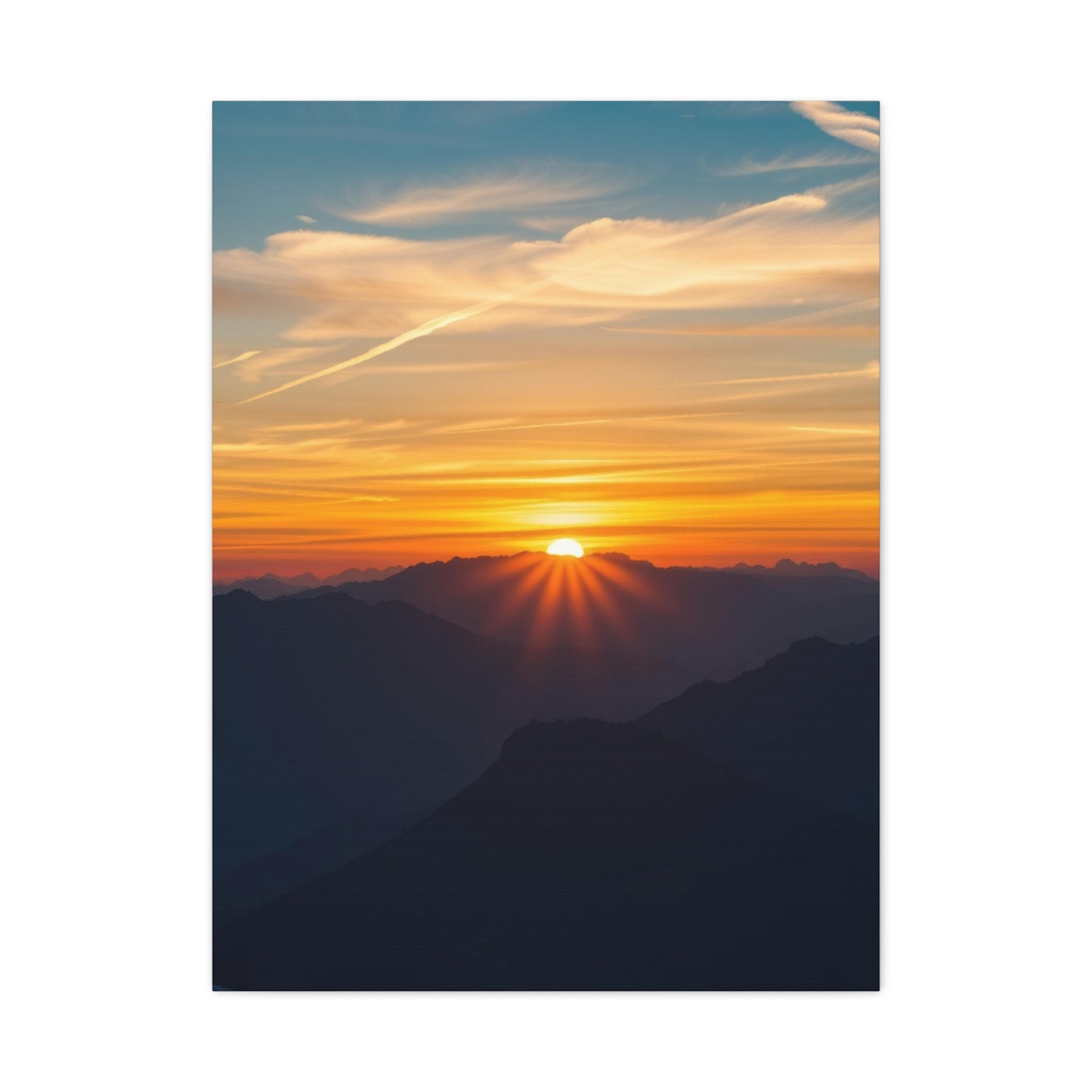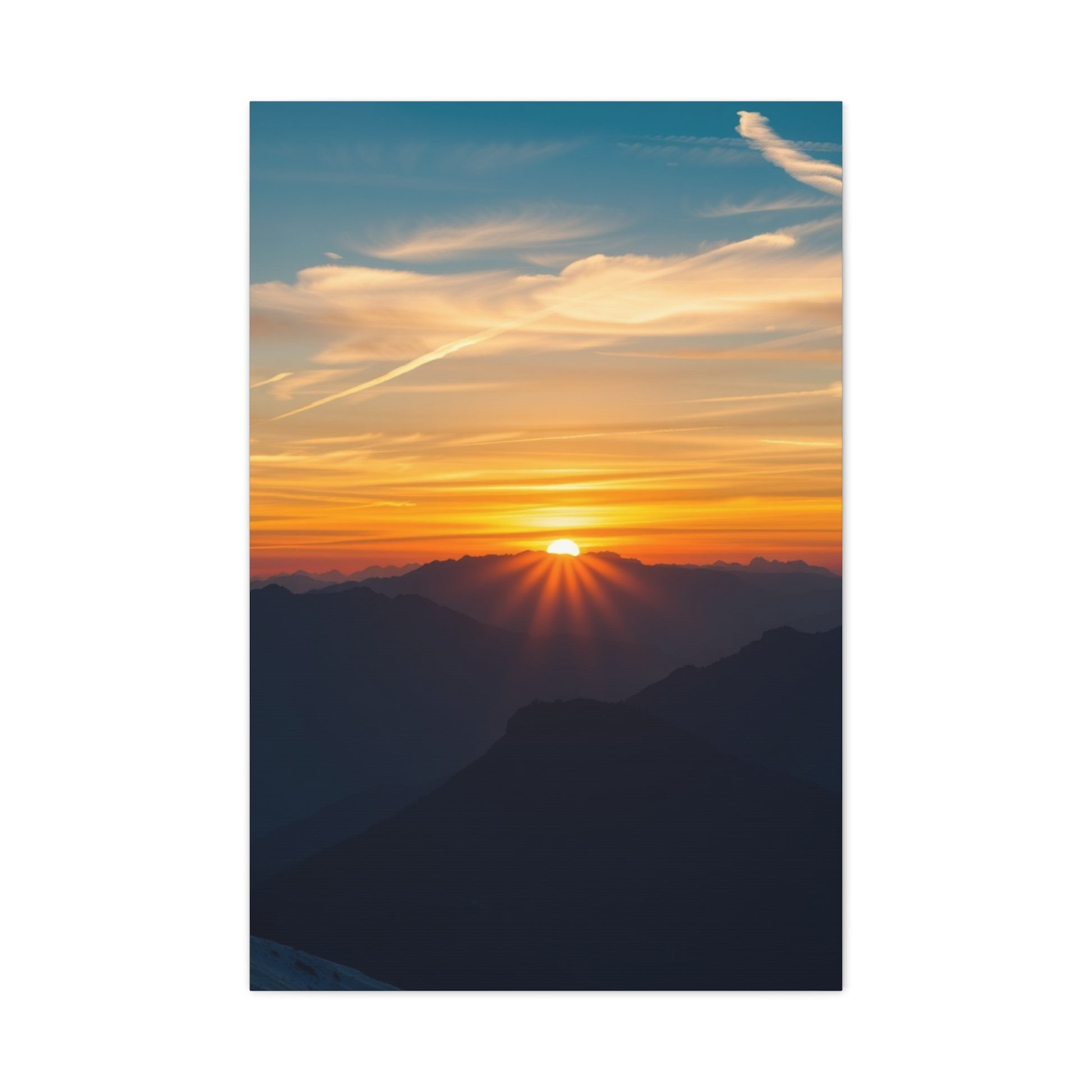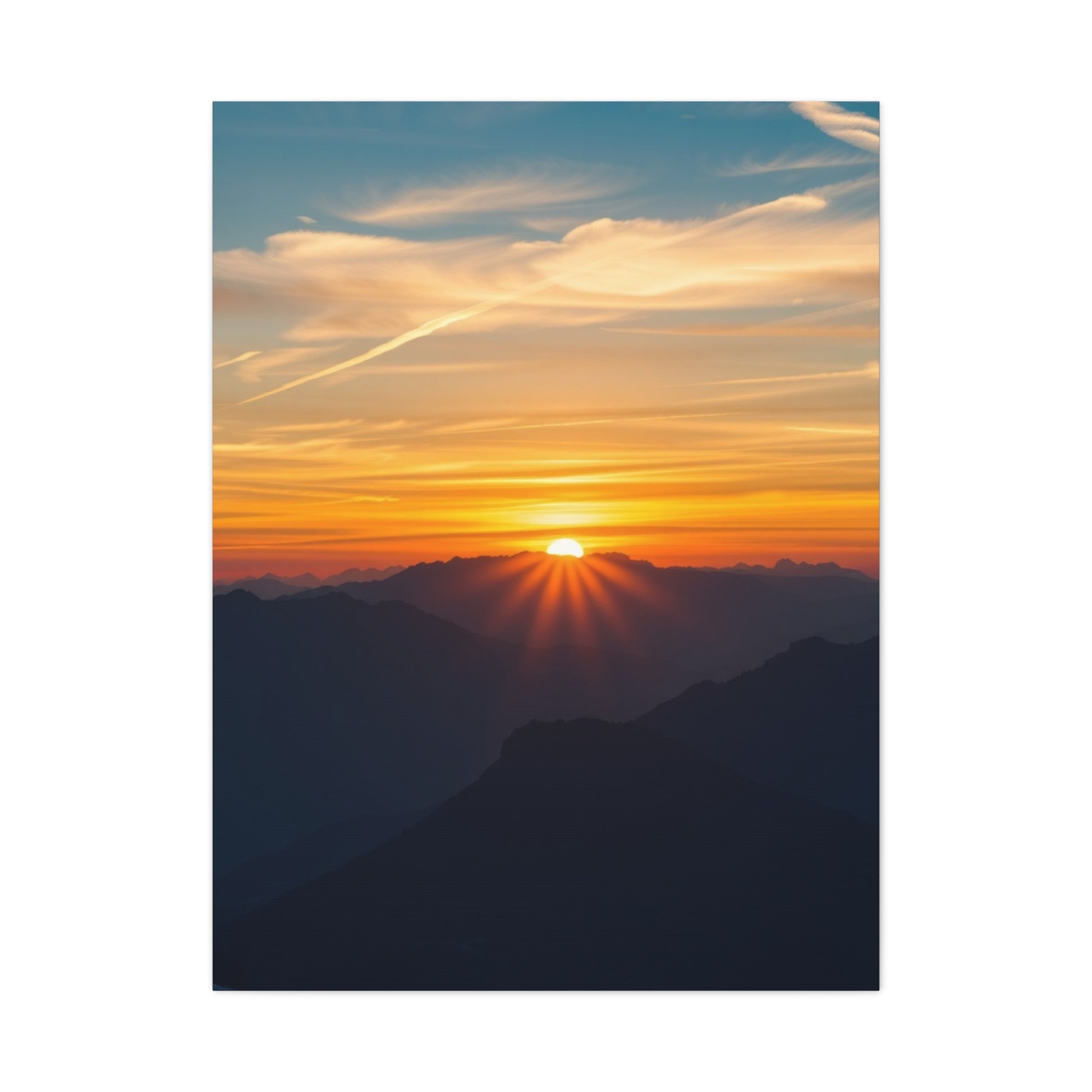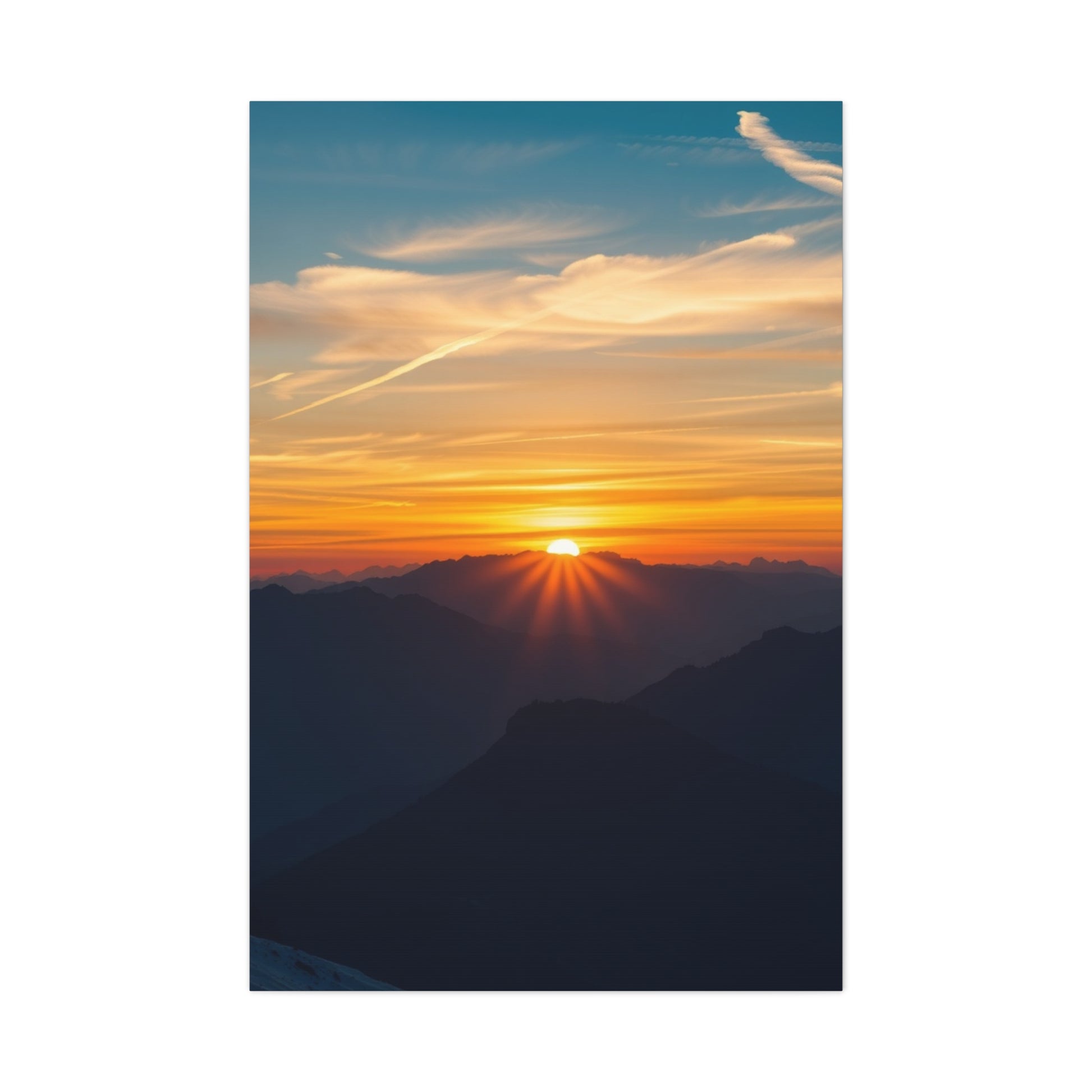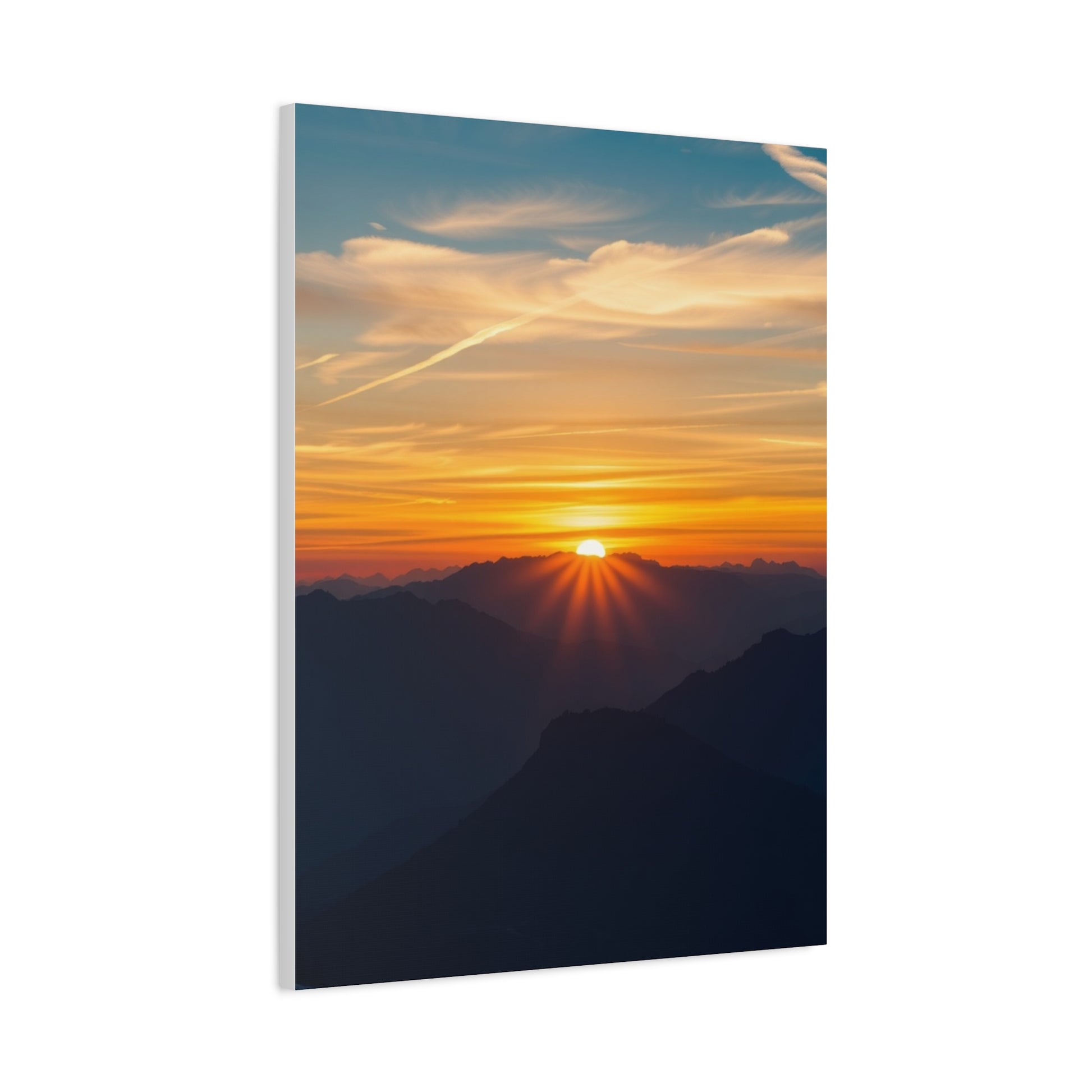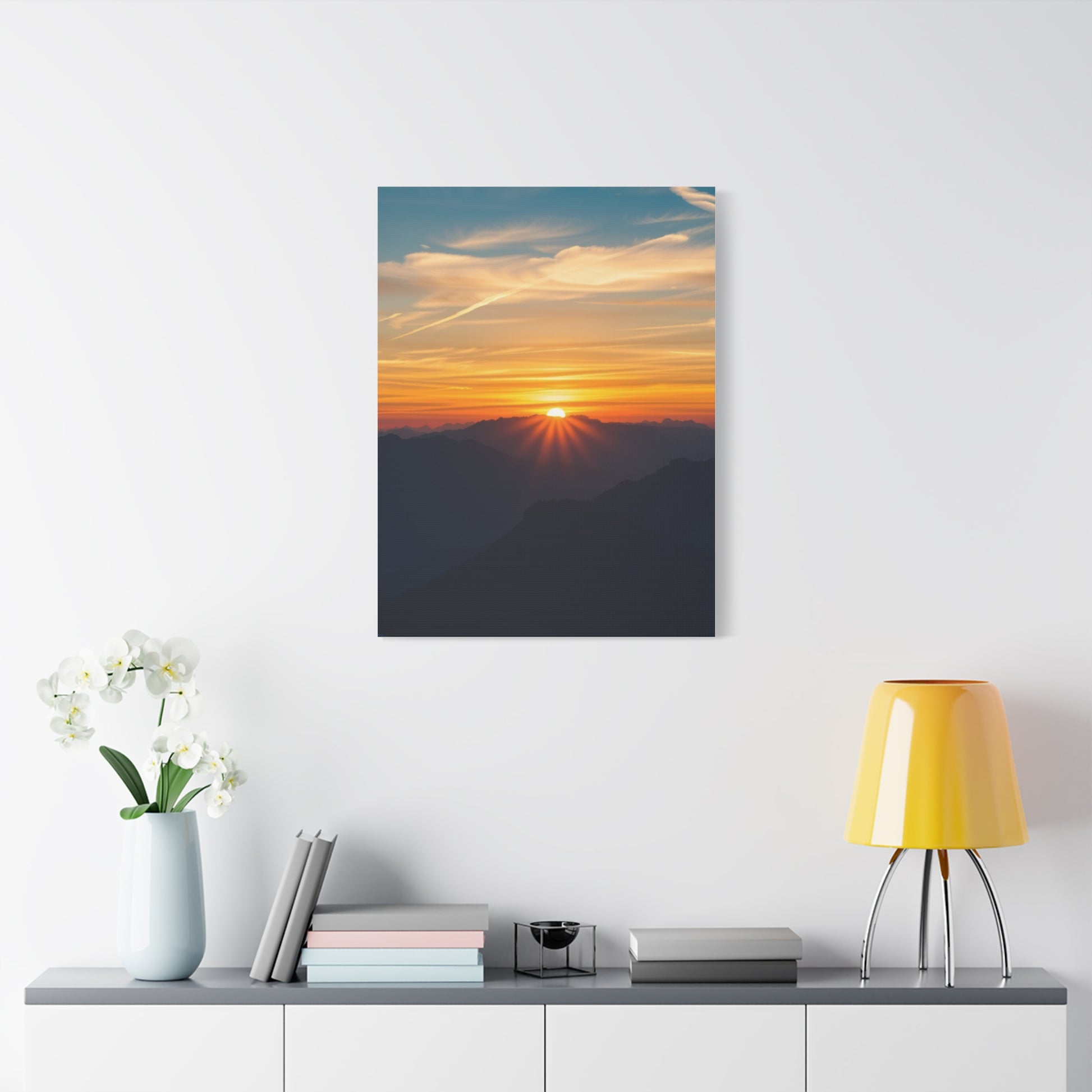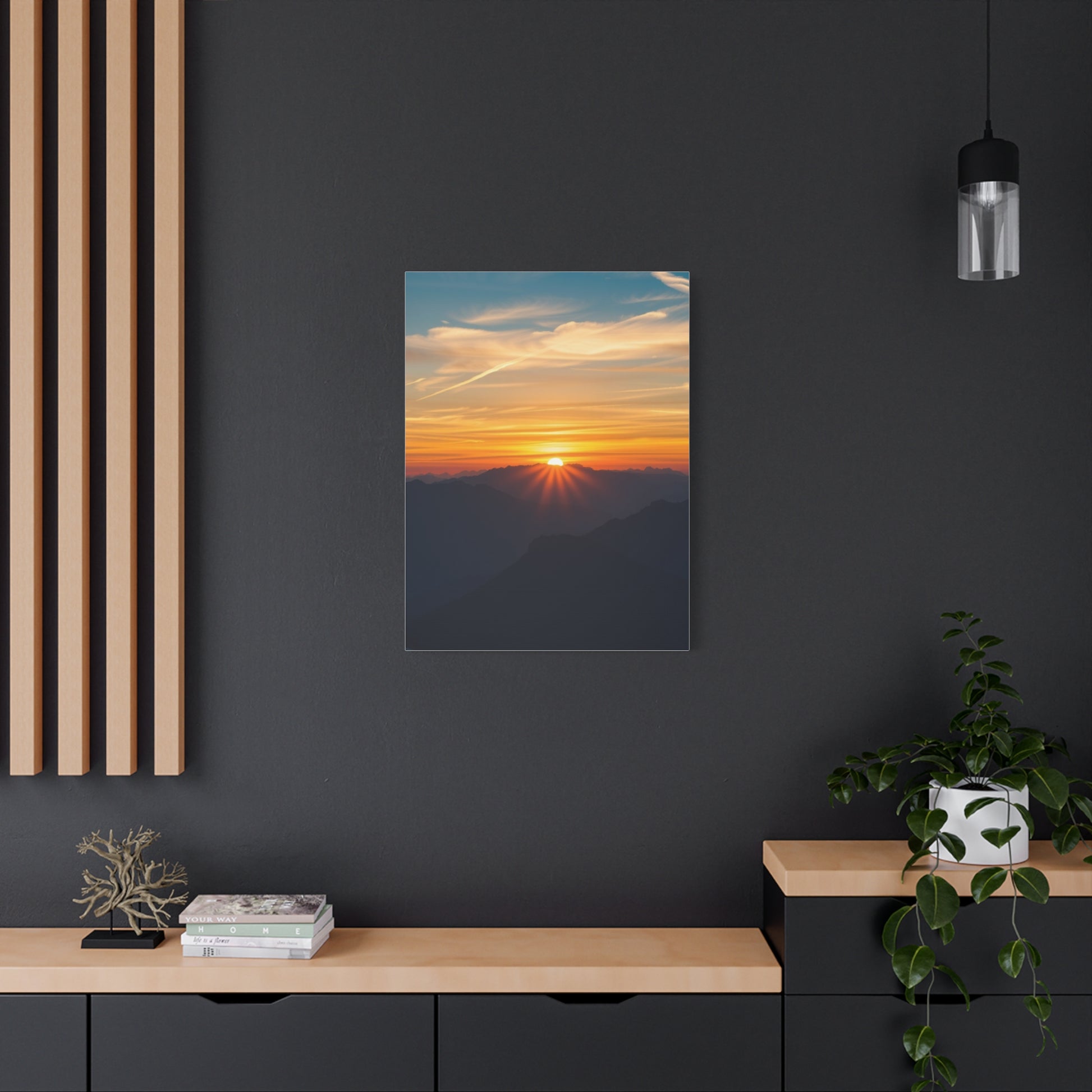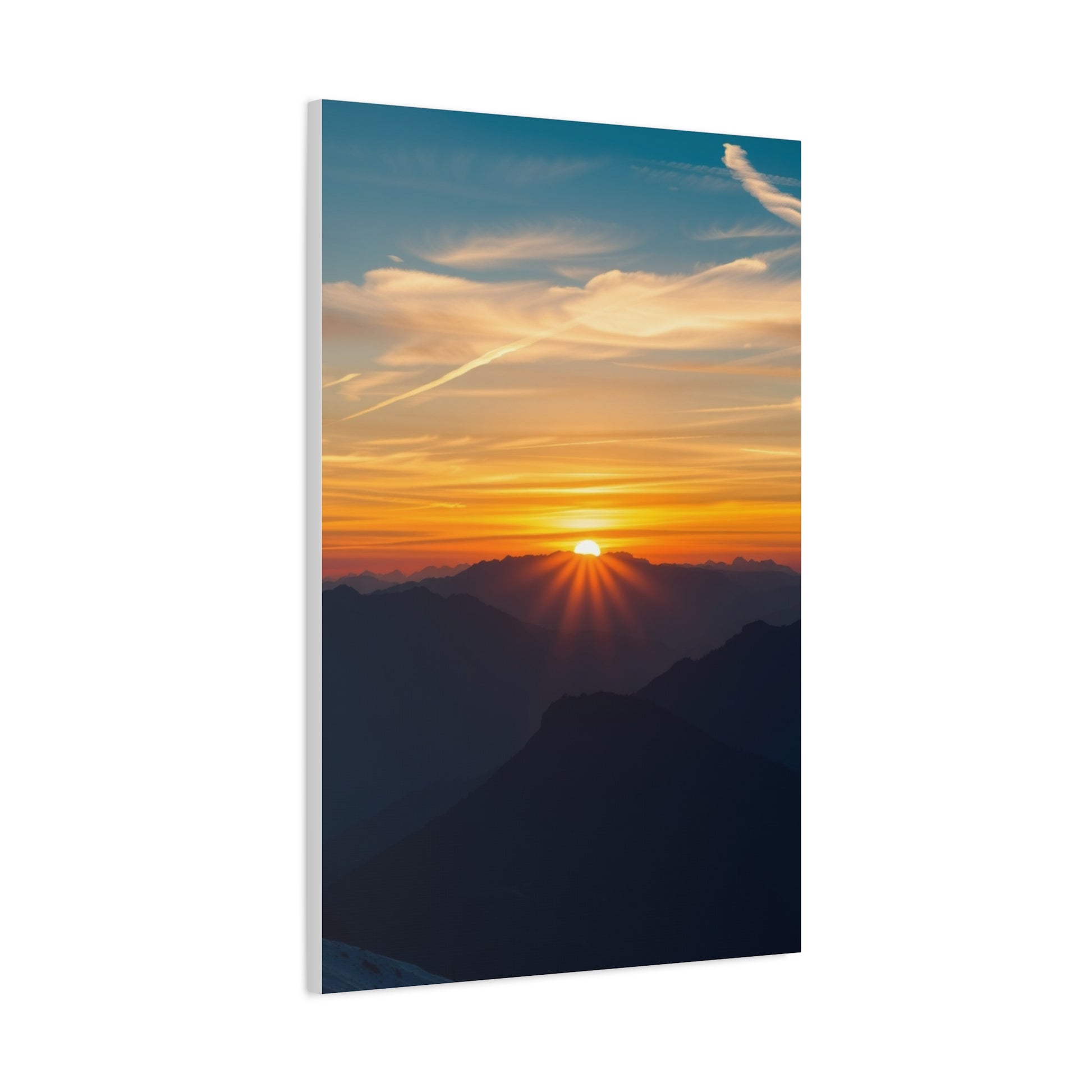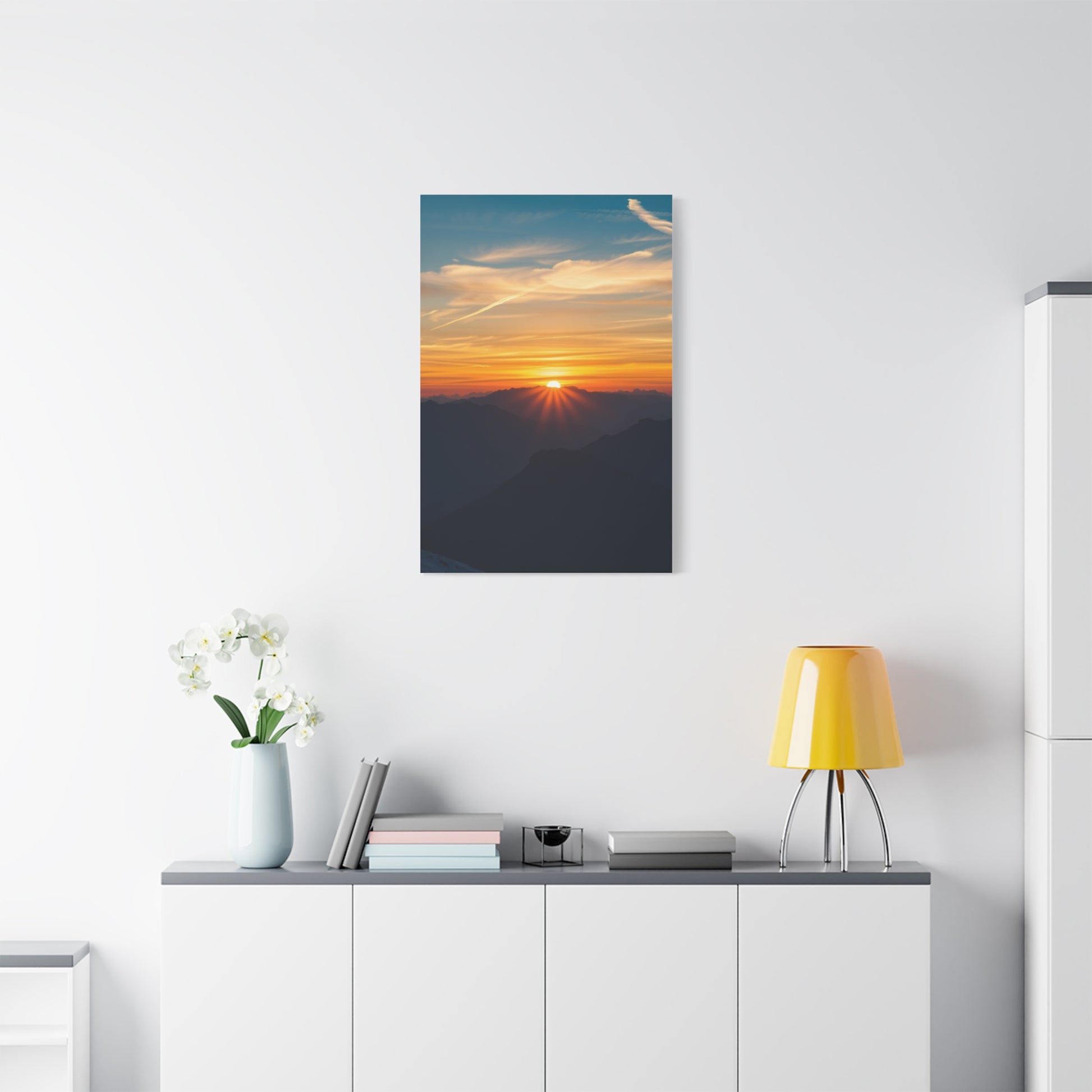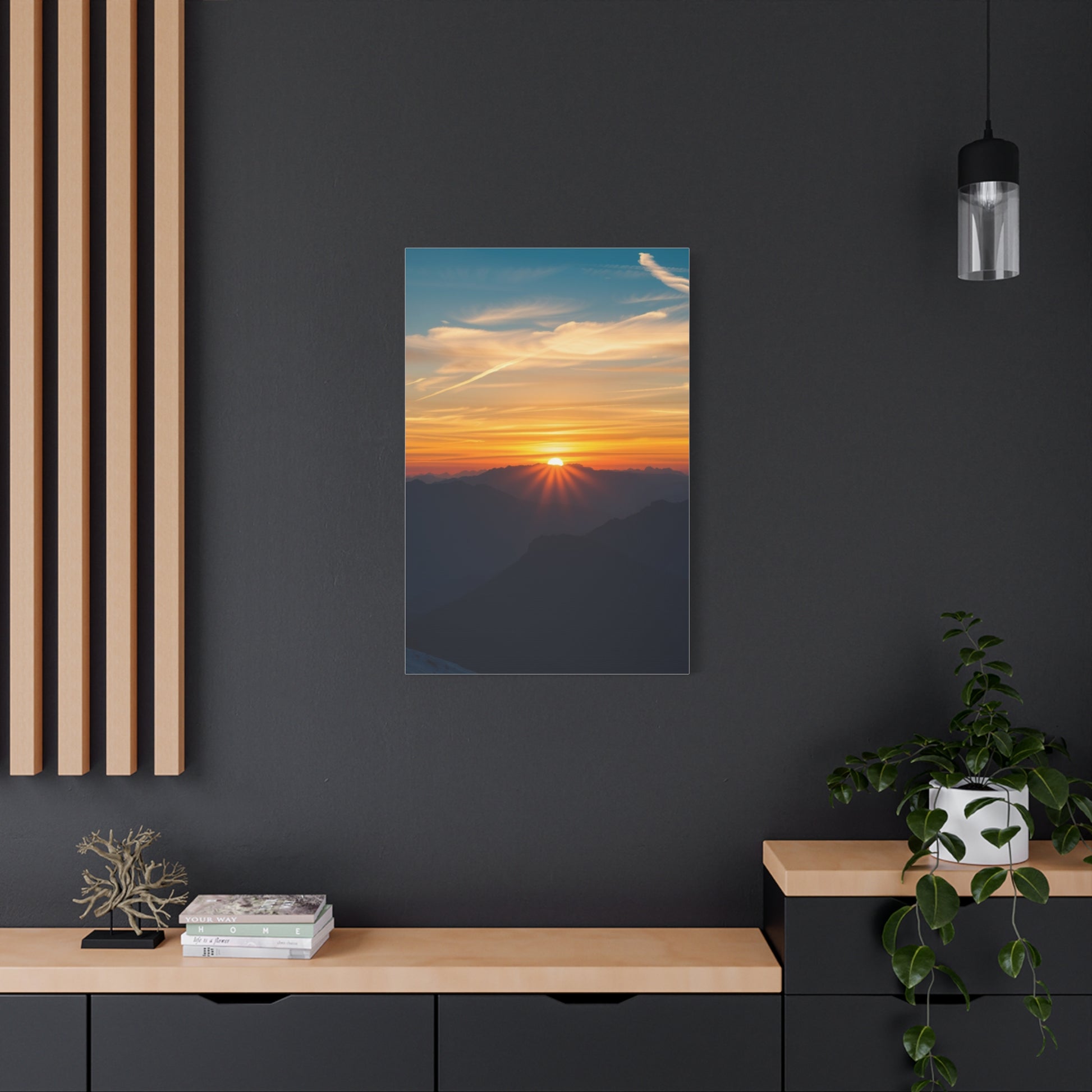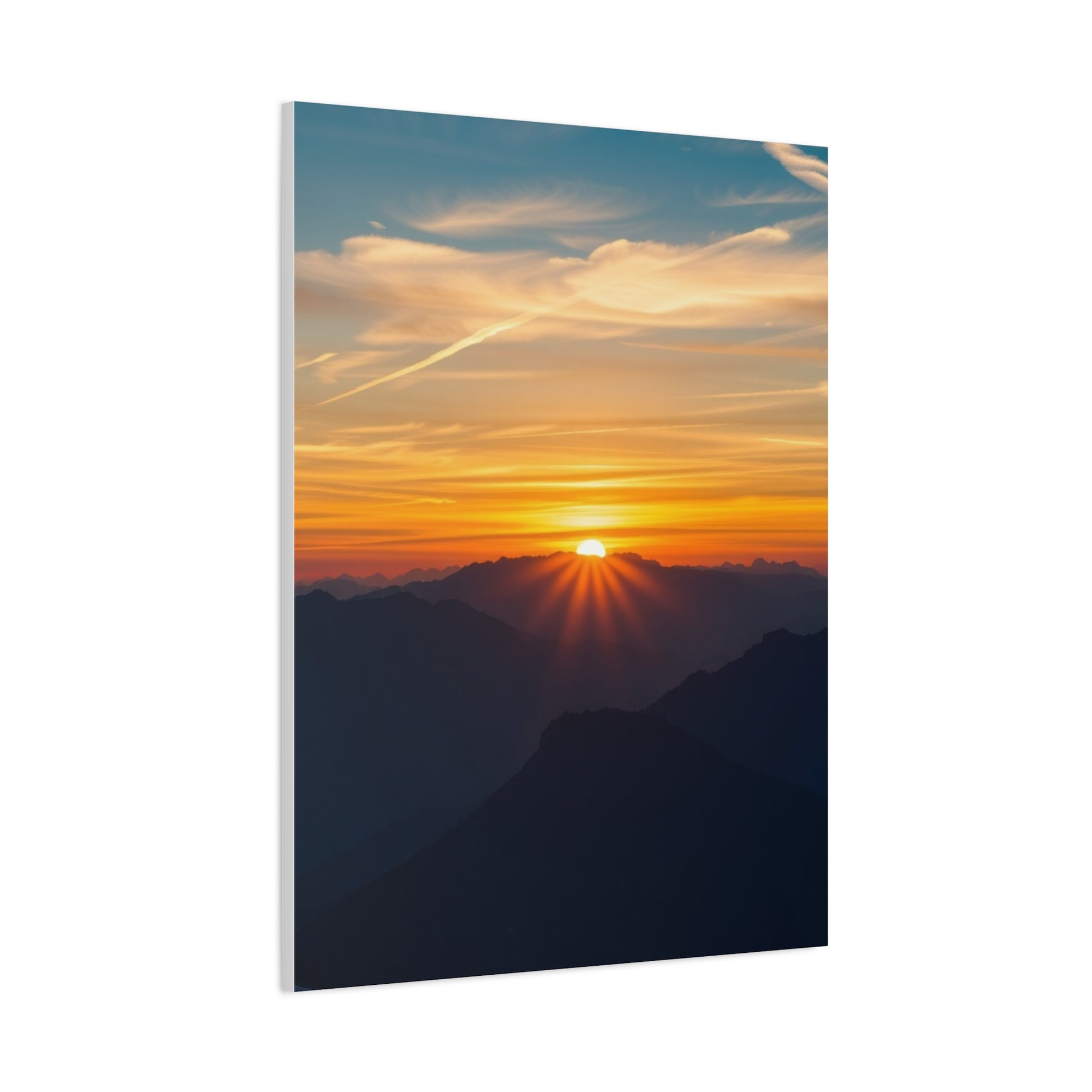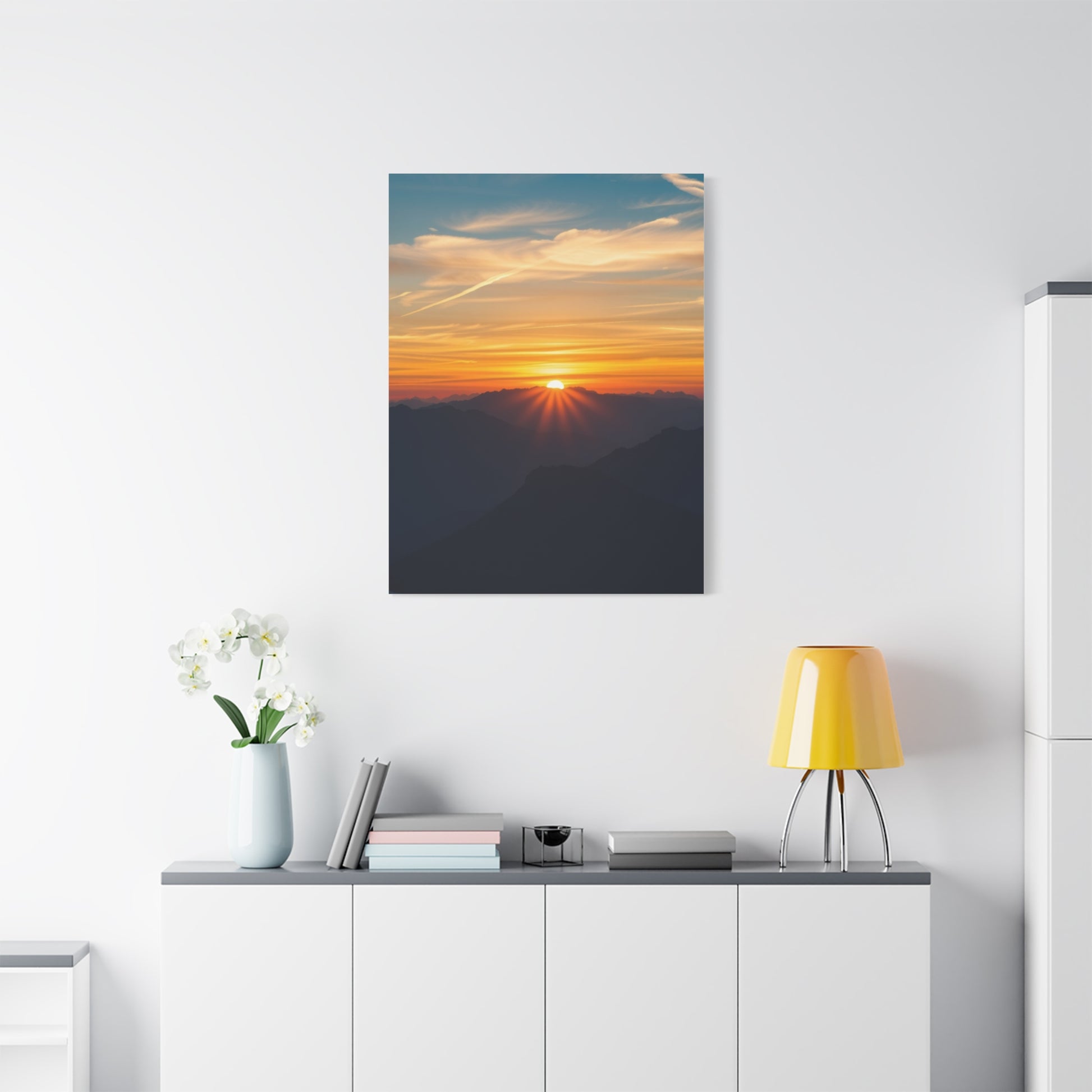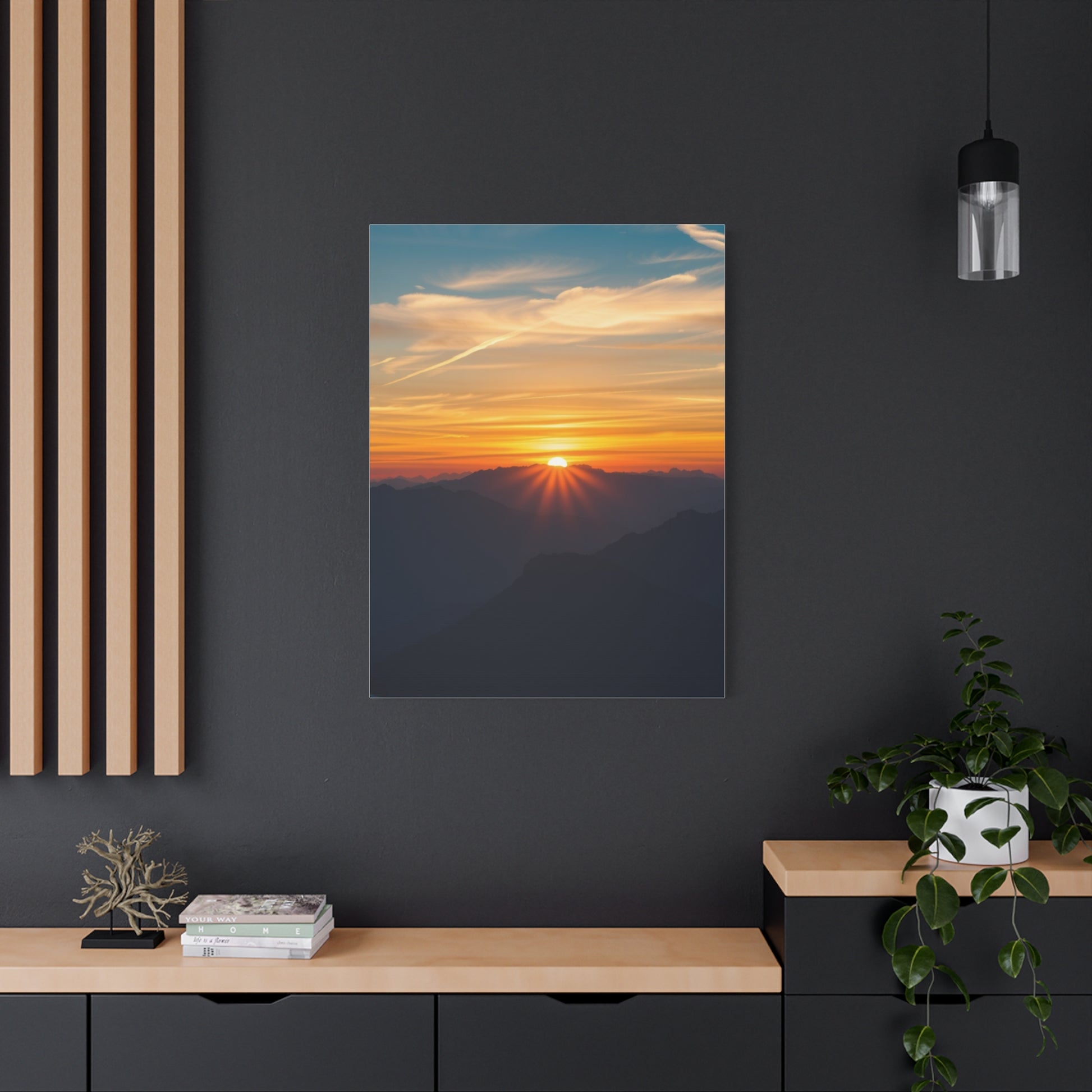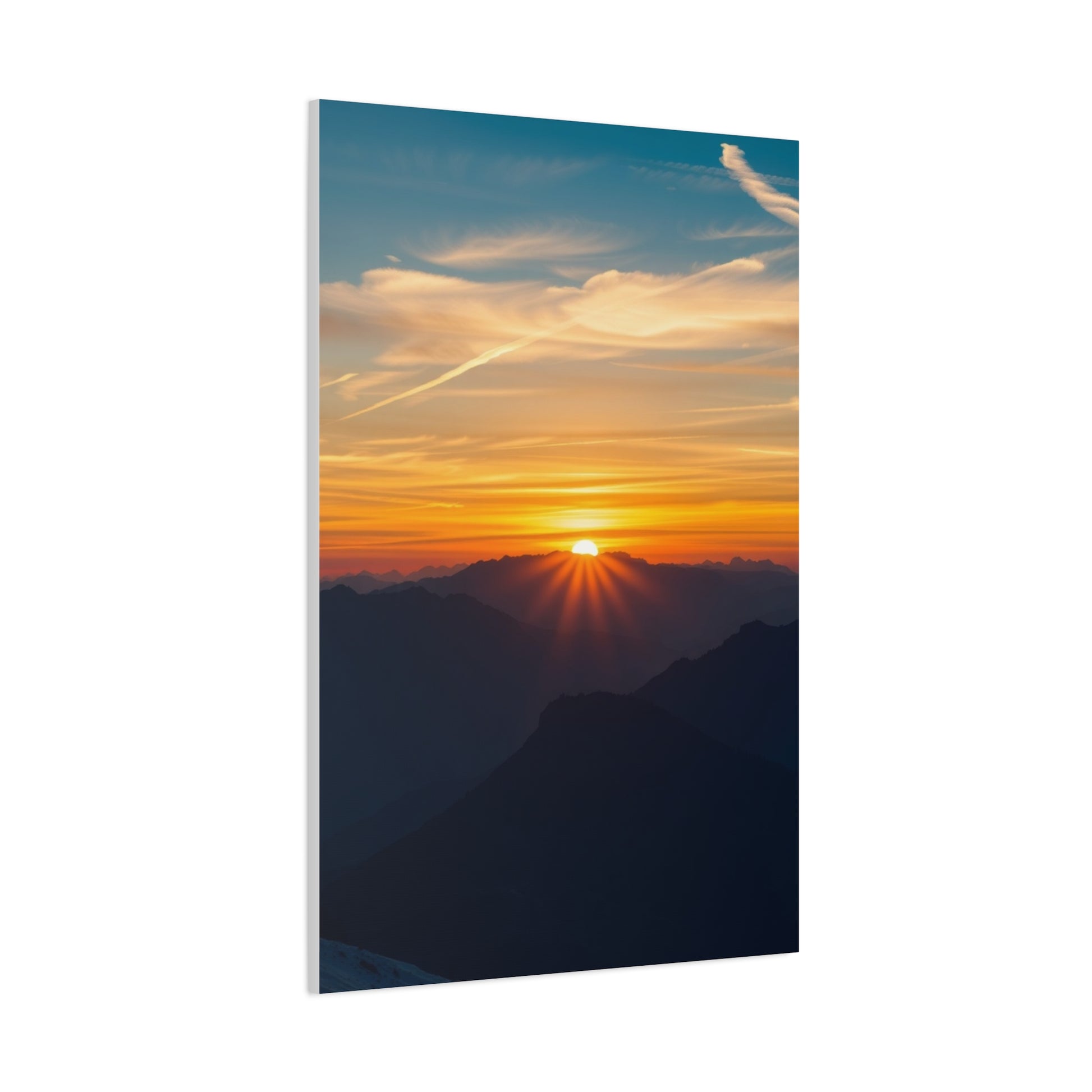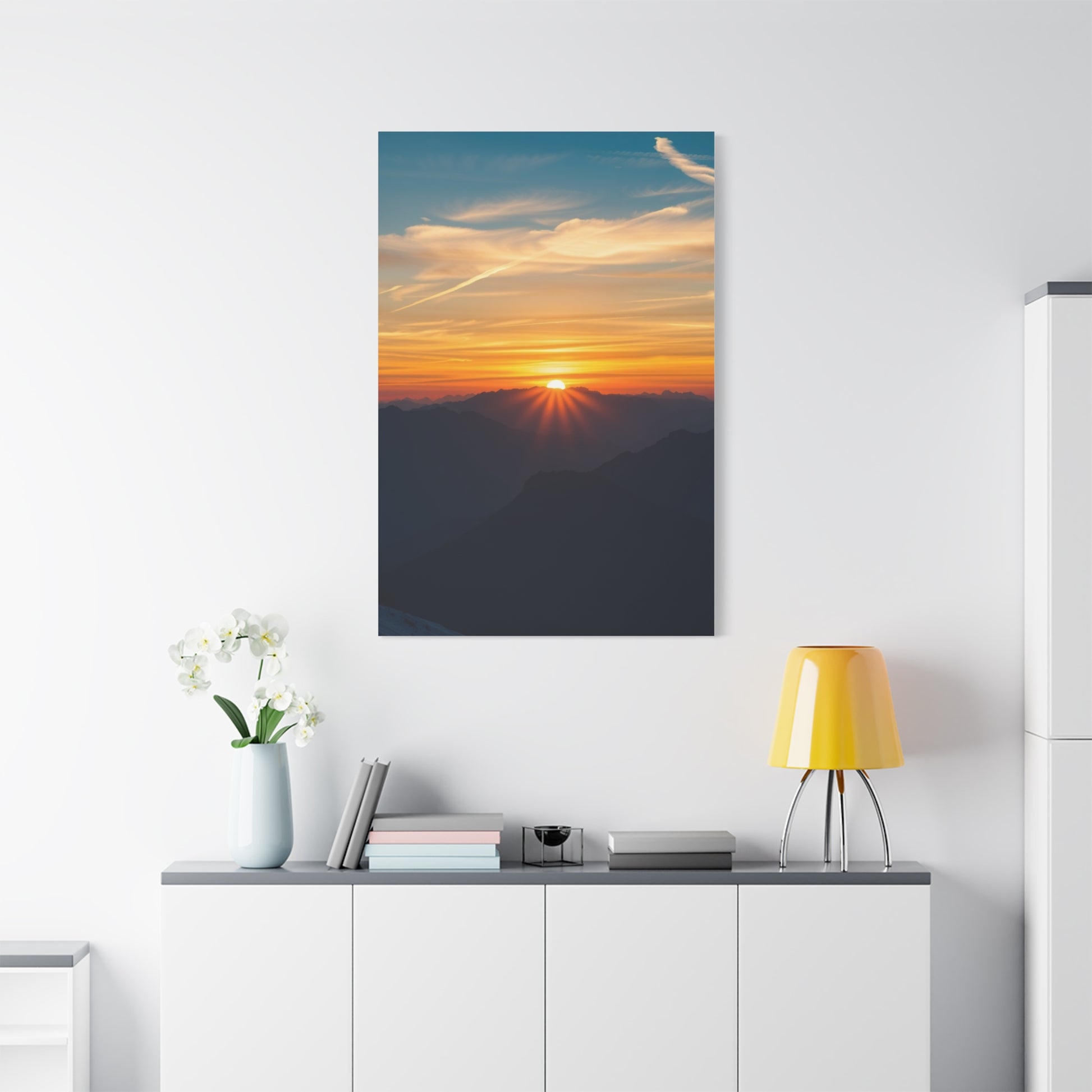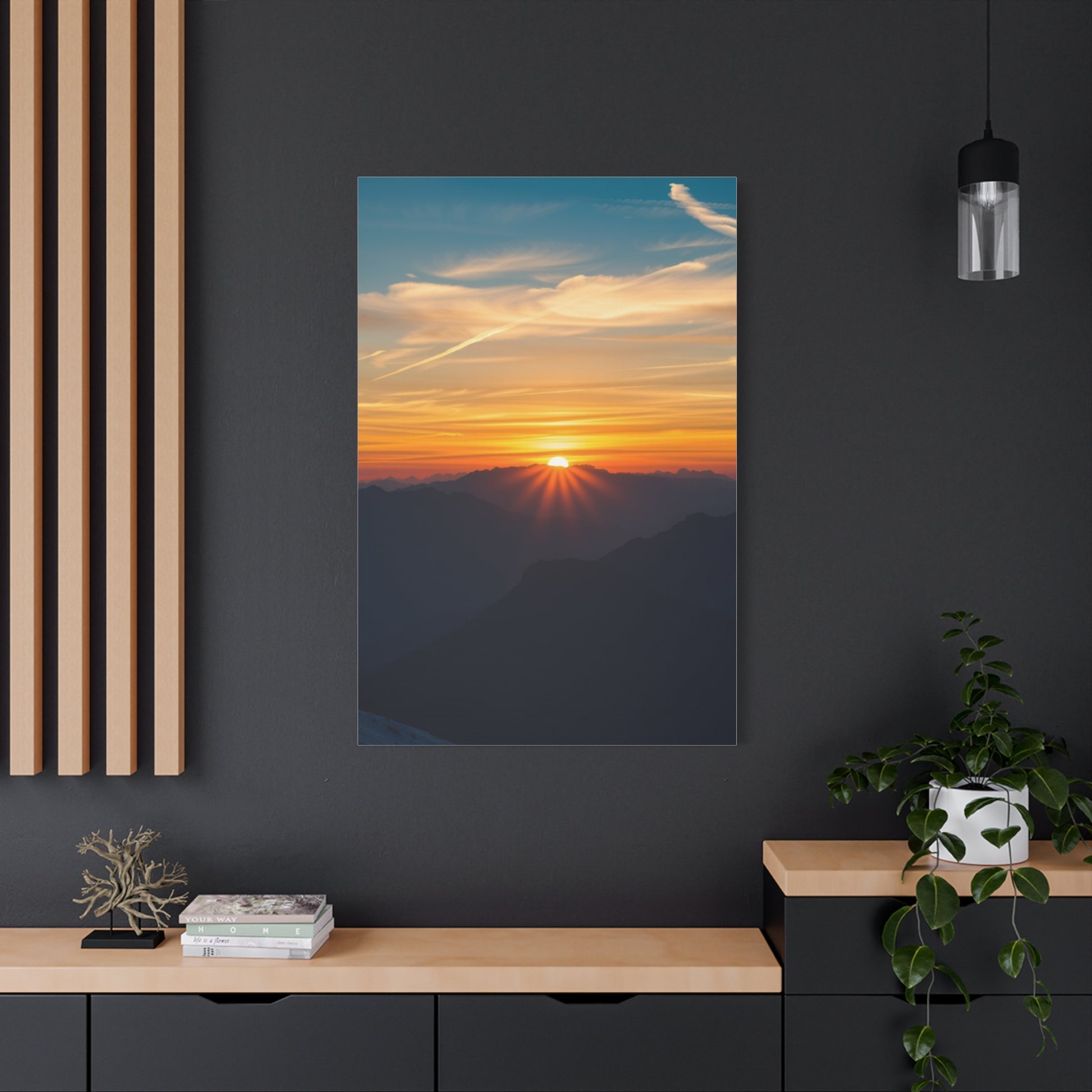Alpine Dawn & Dusk Masterpiece Wall Art & Canvas Print
Alpine Dawn & Dusk Masterpiece Wall Art & Canvas Print
Couldn't load pickup availability
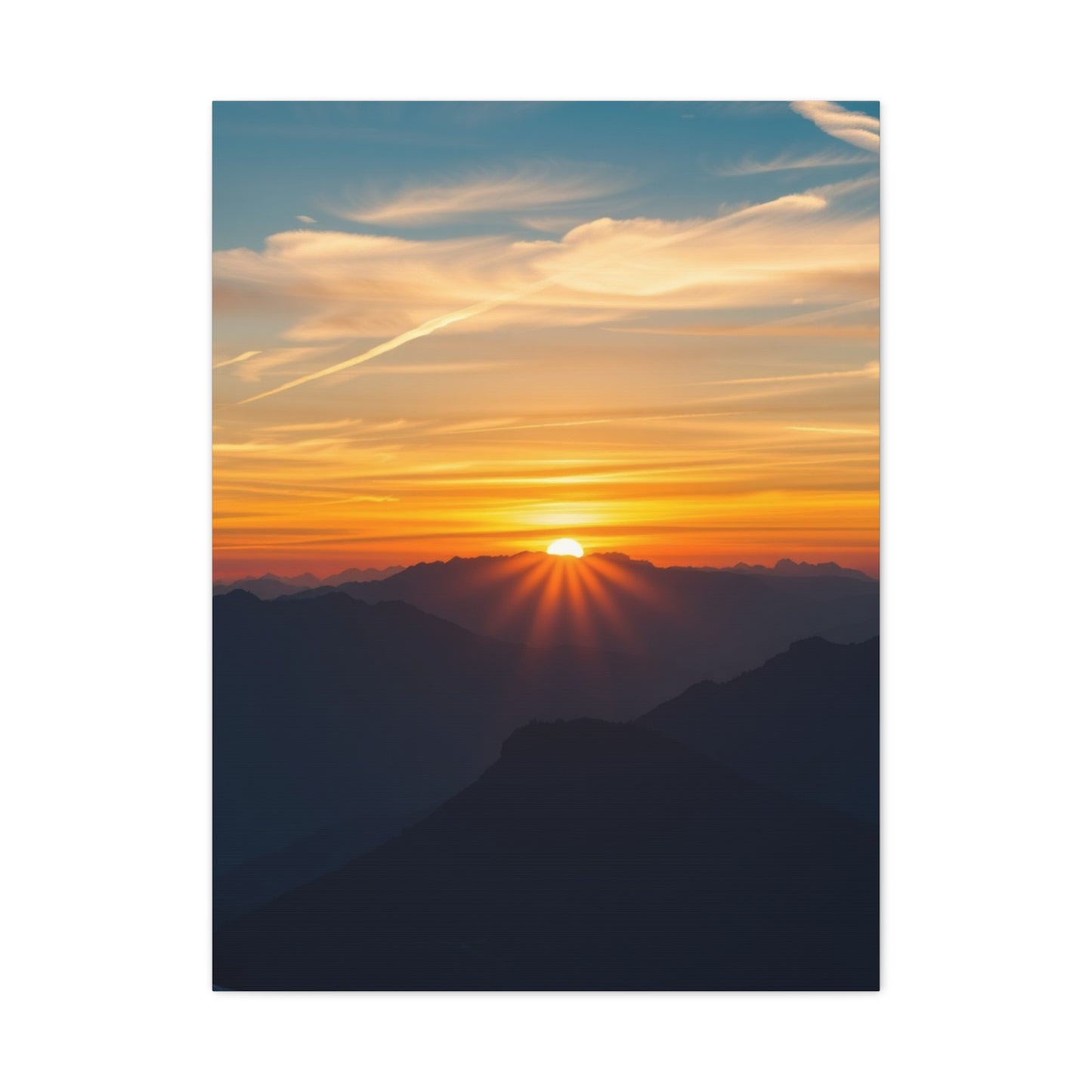
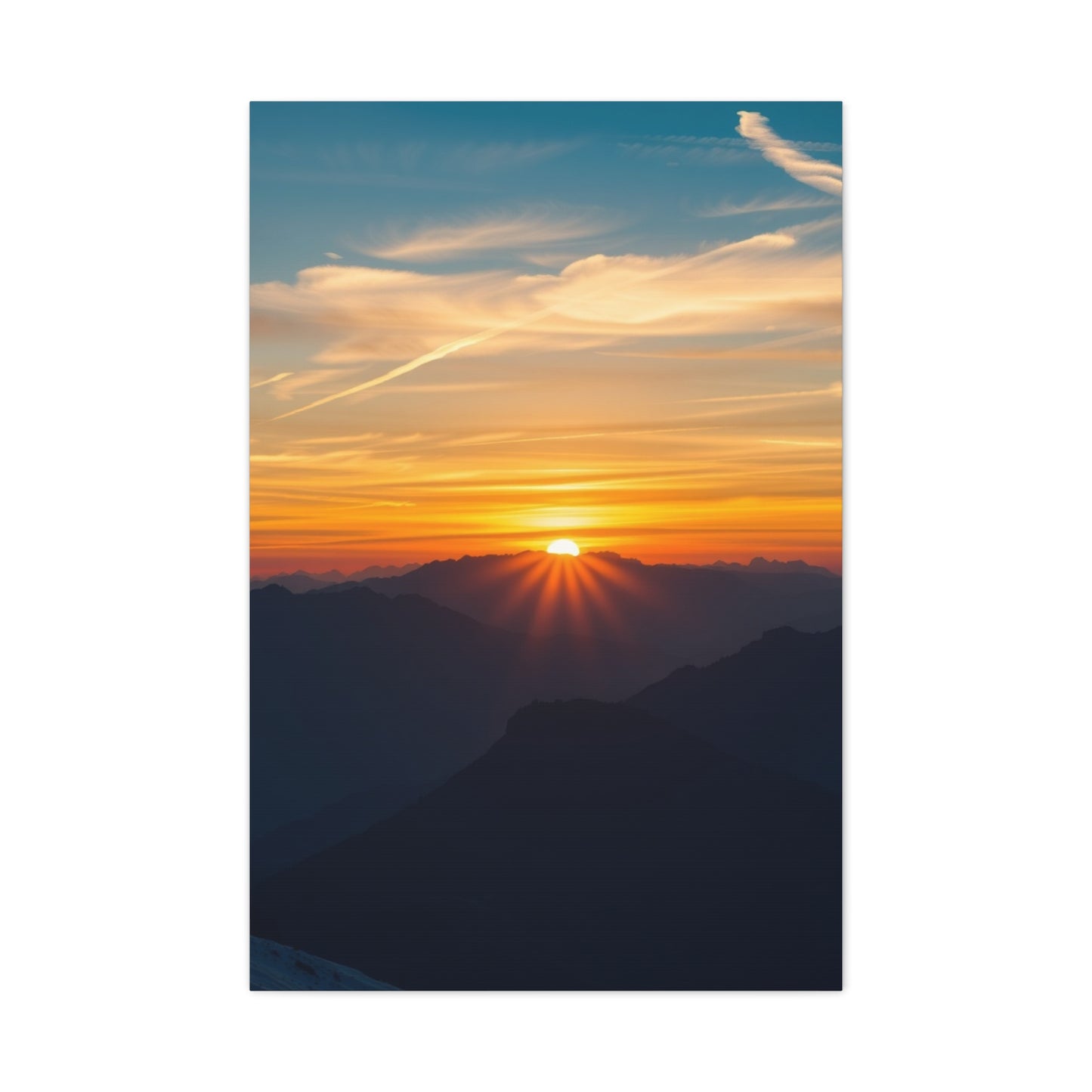
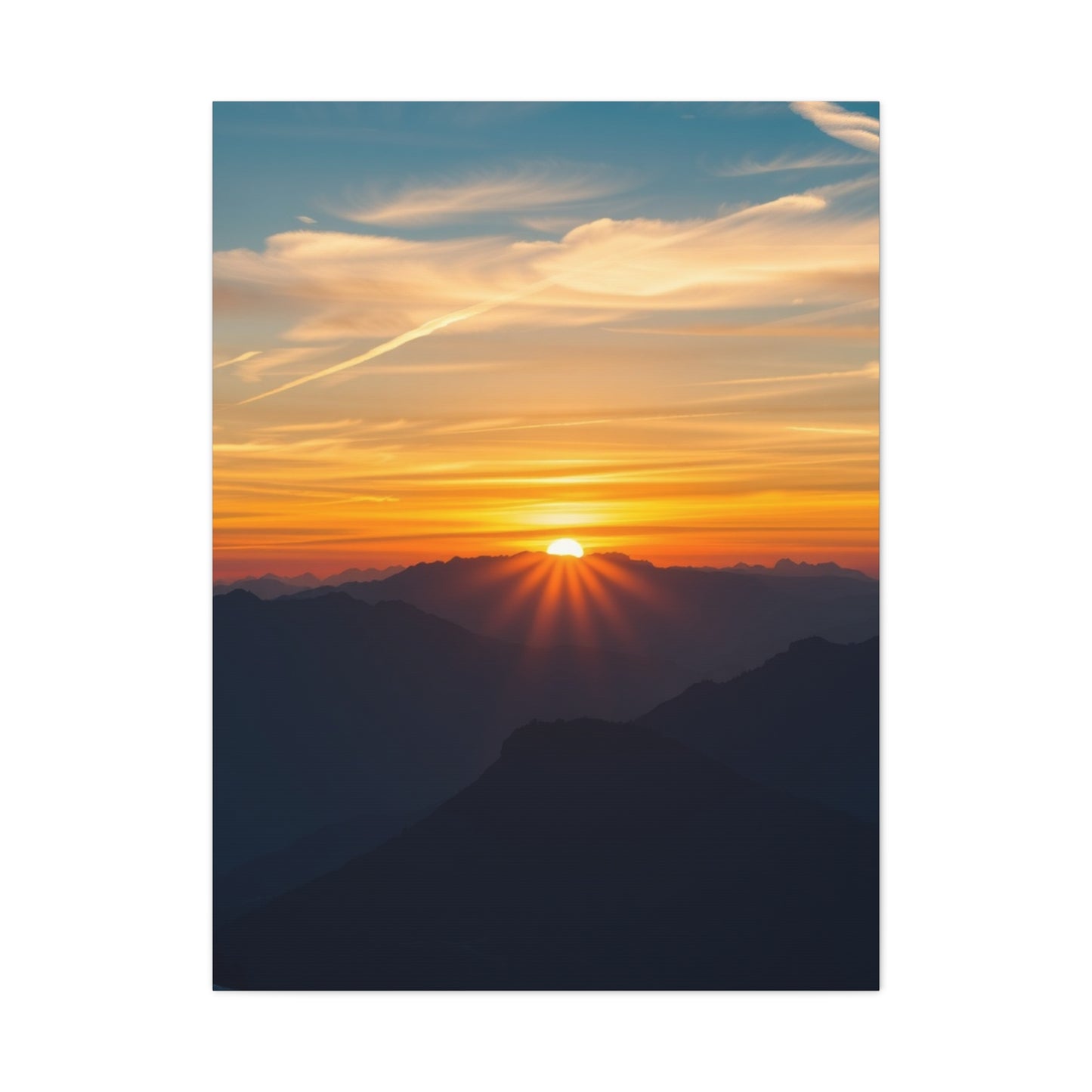
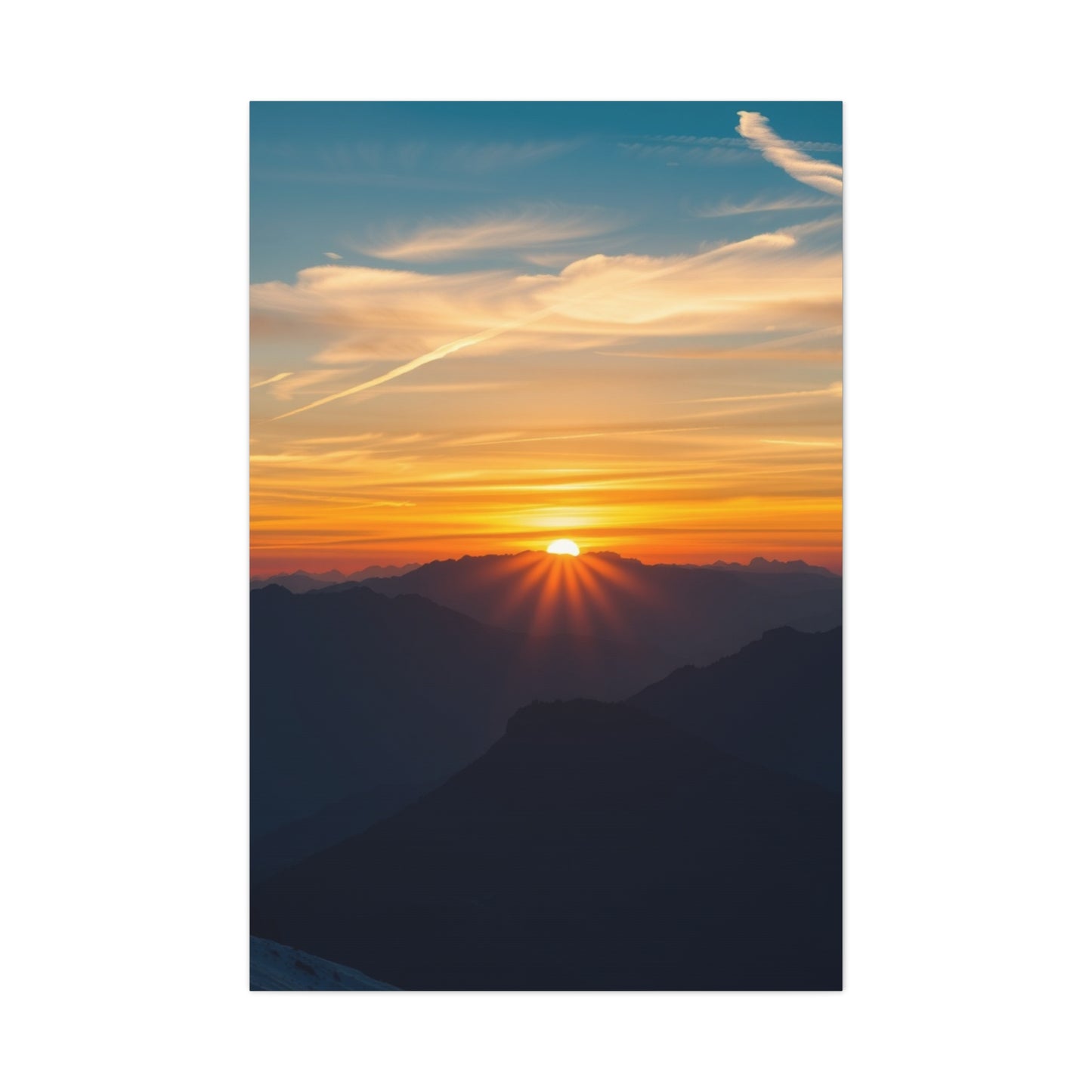
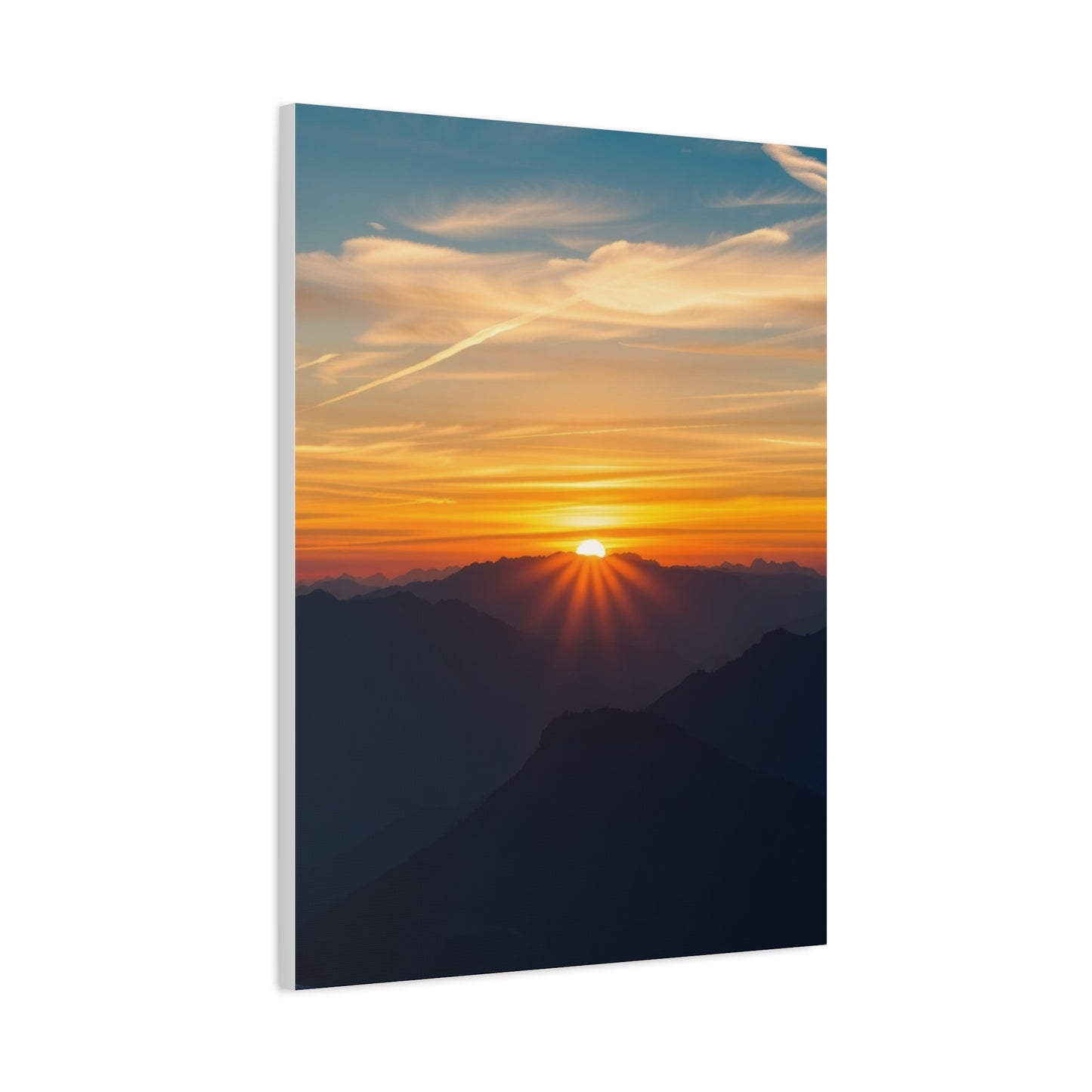
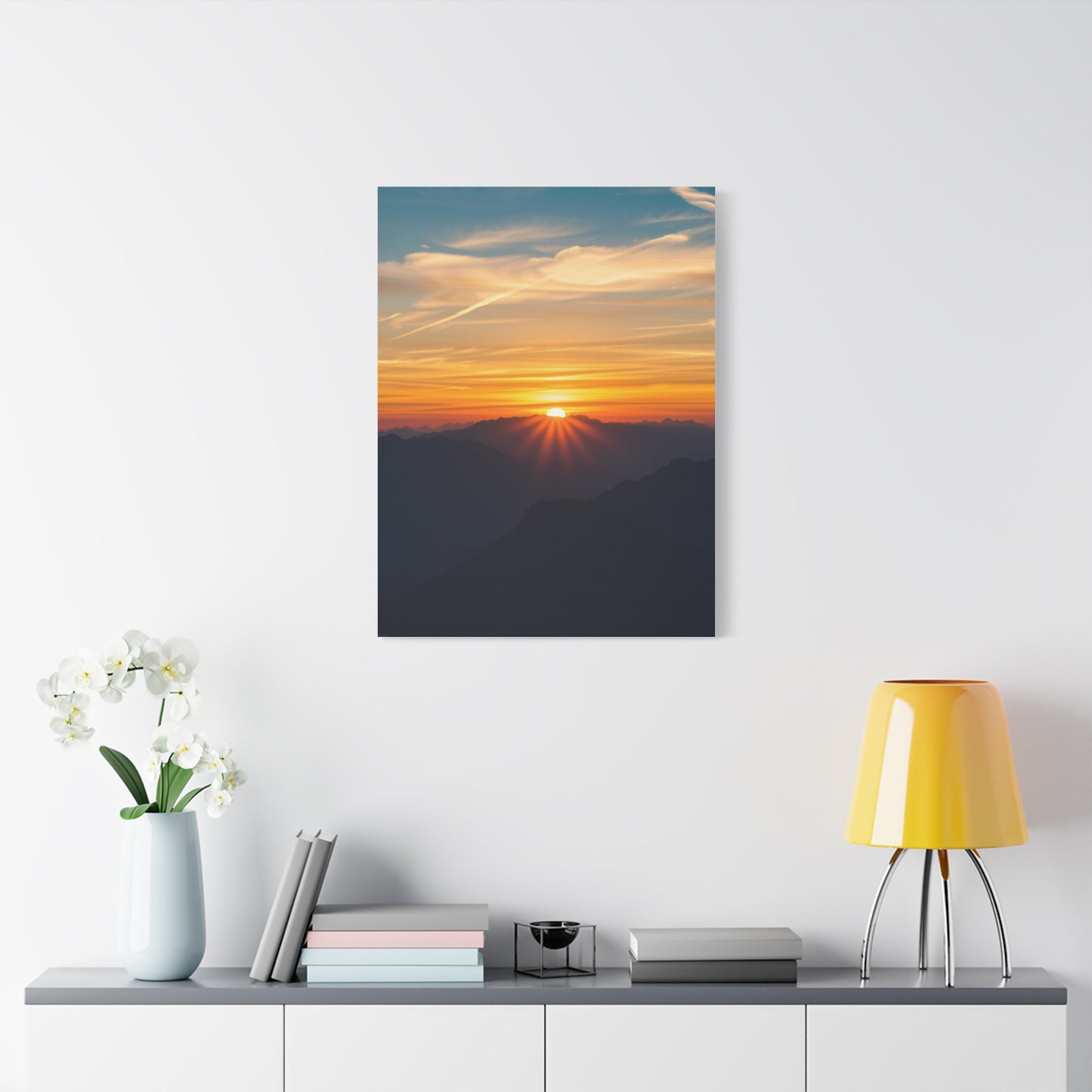
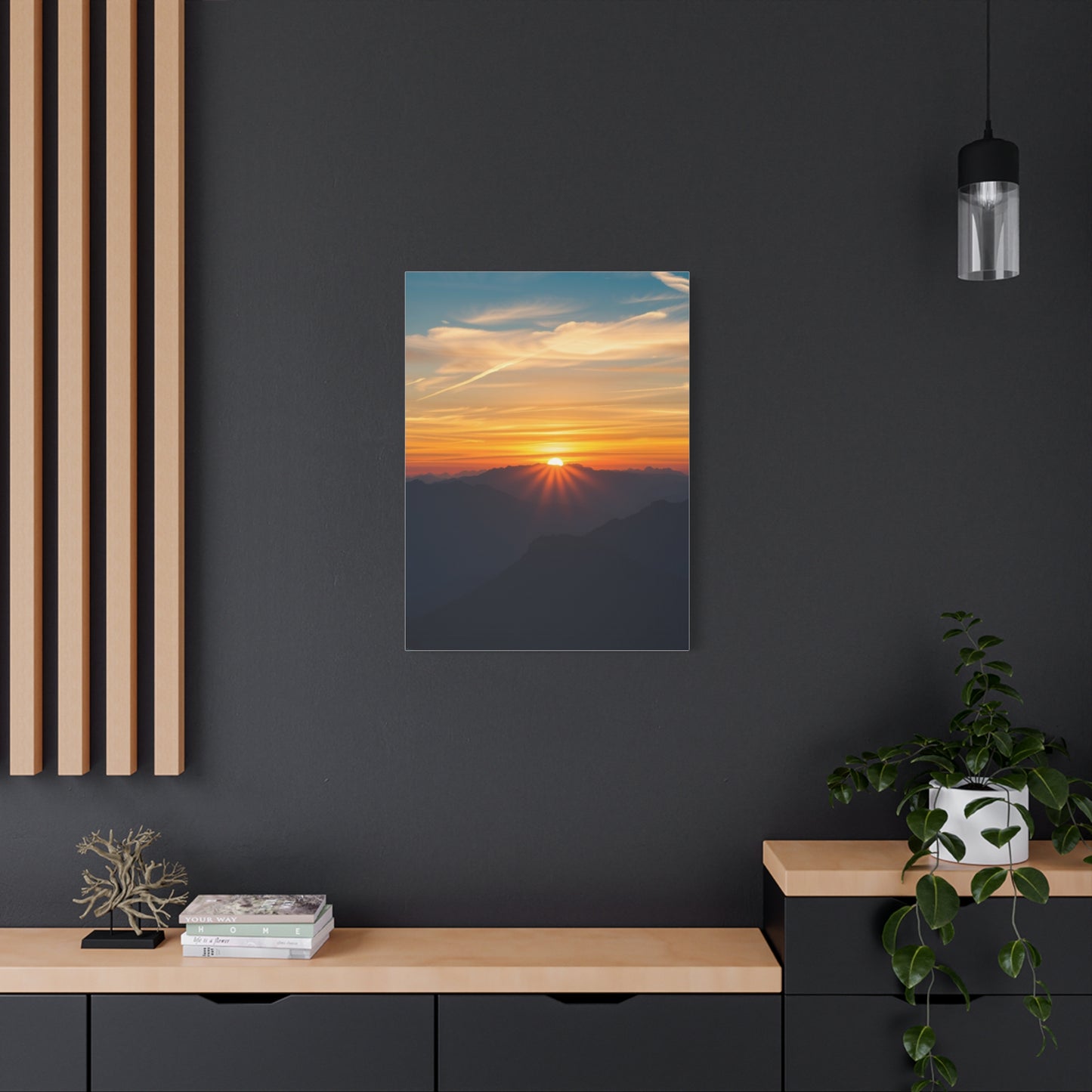
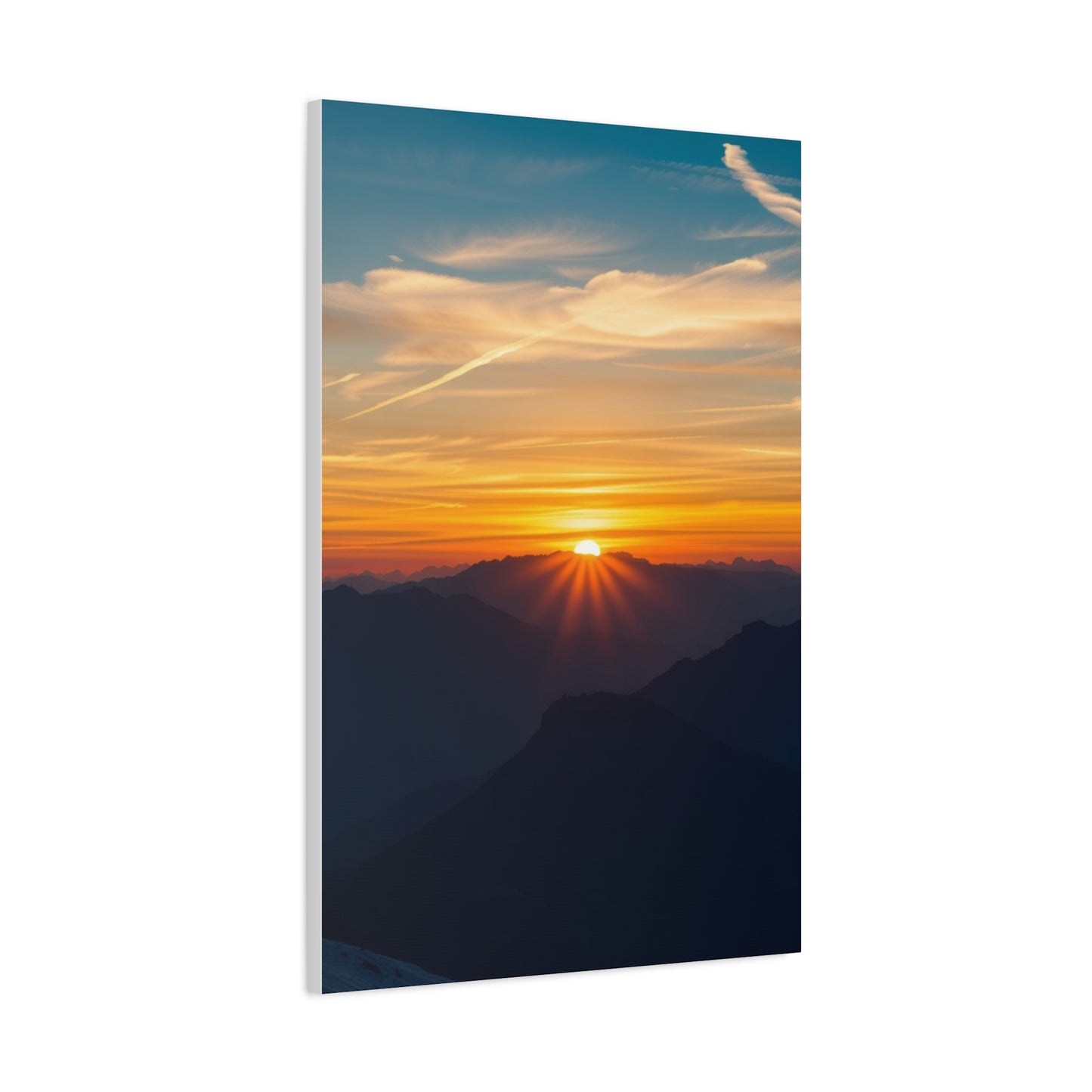
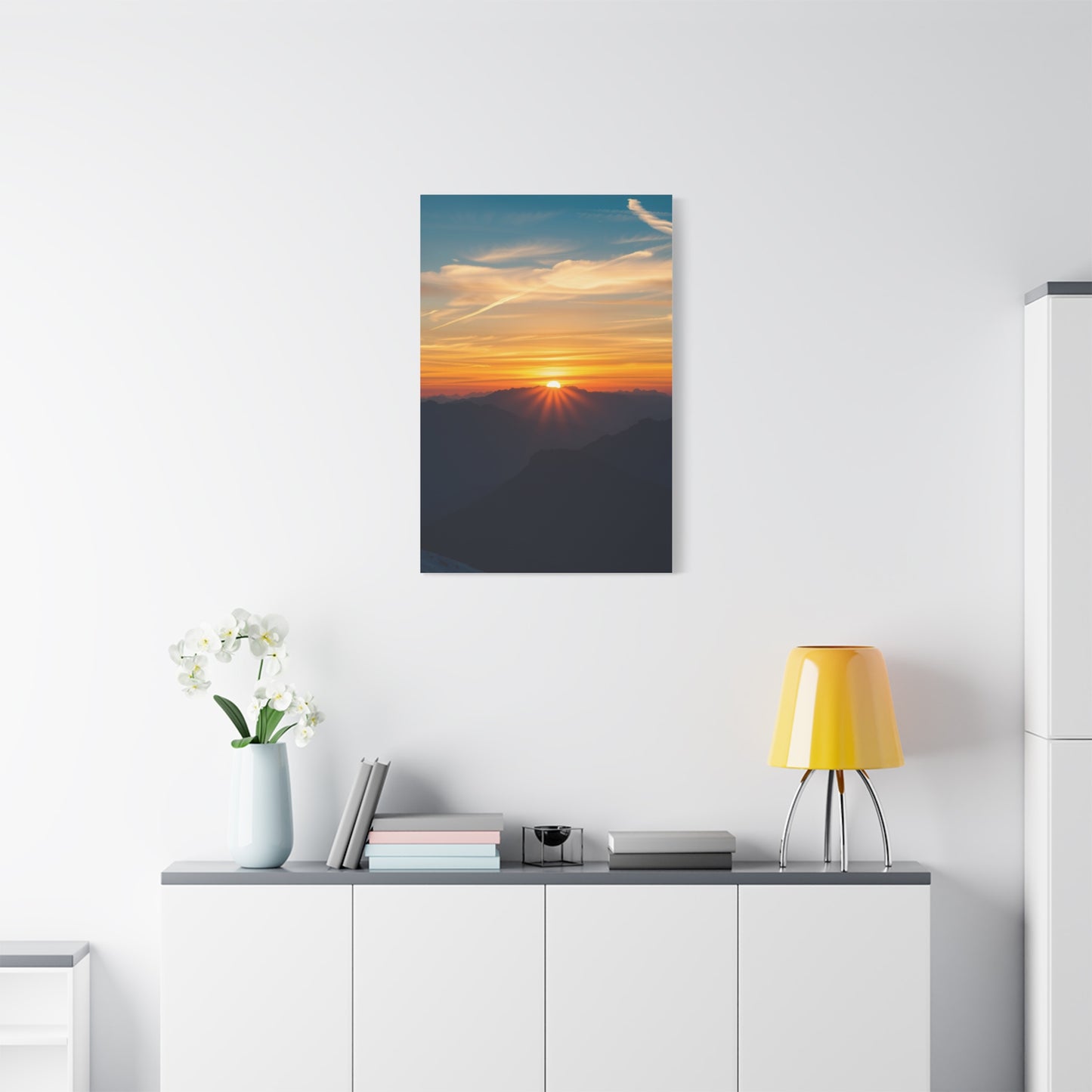
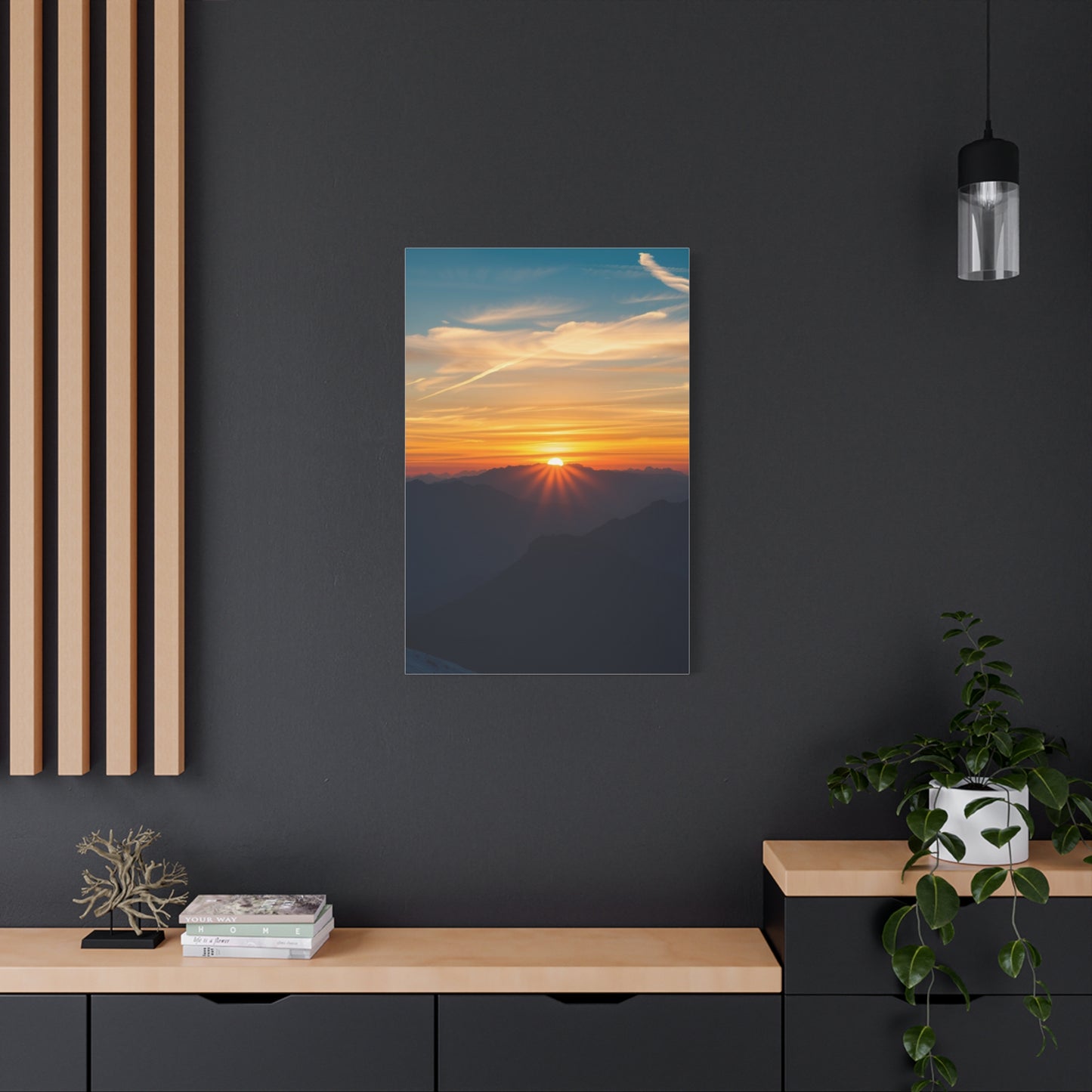
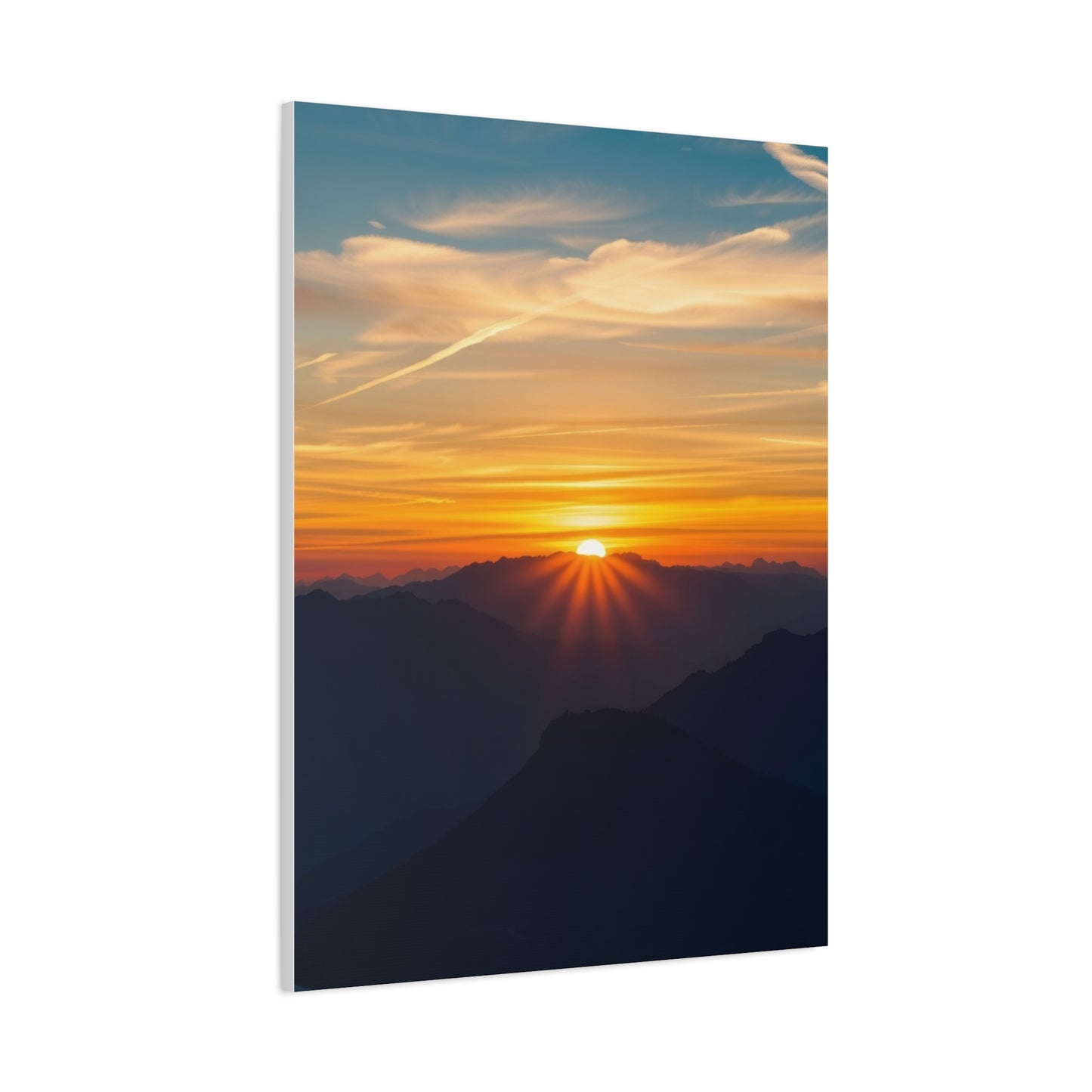
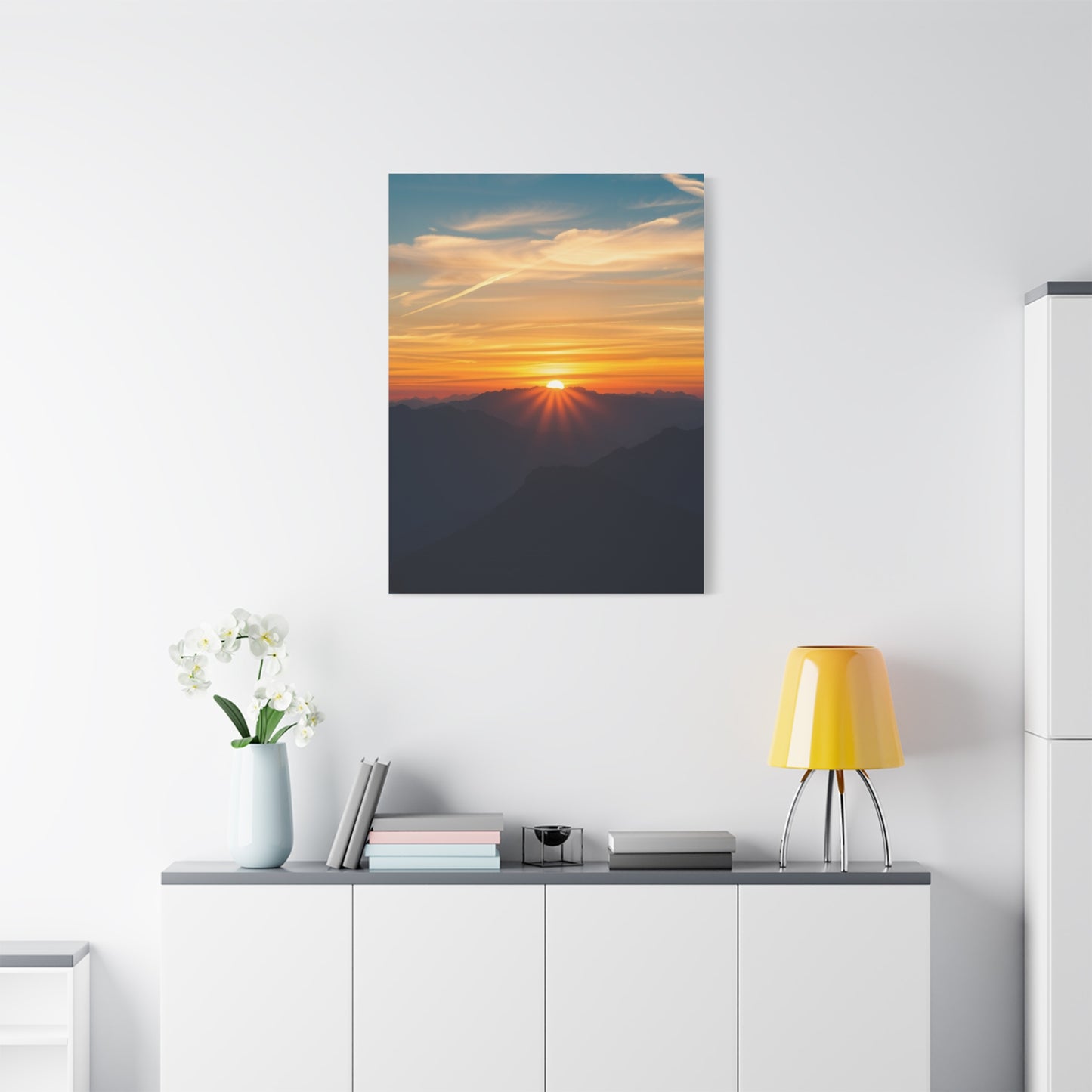
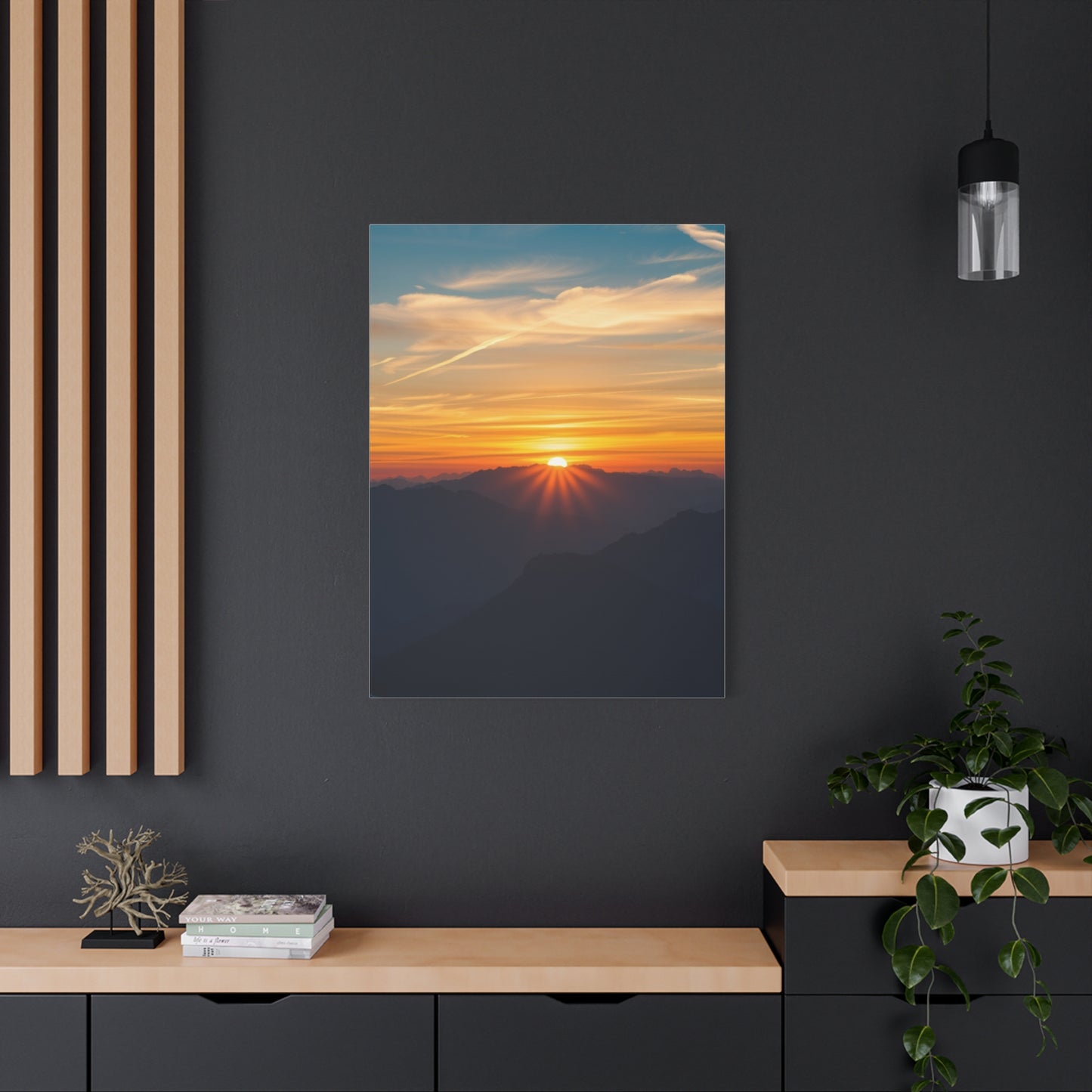
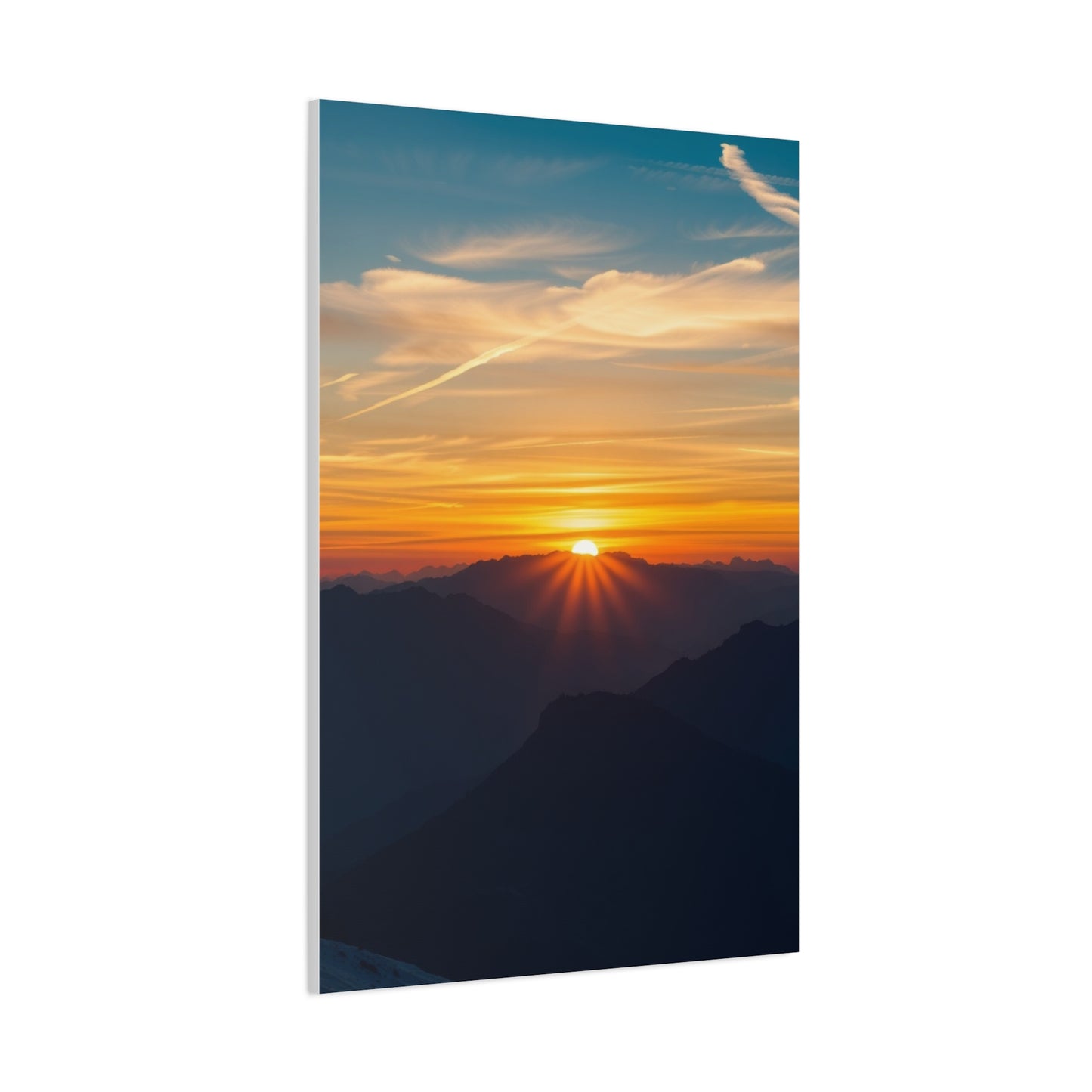
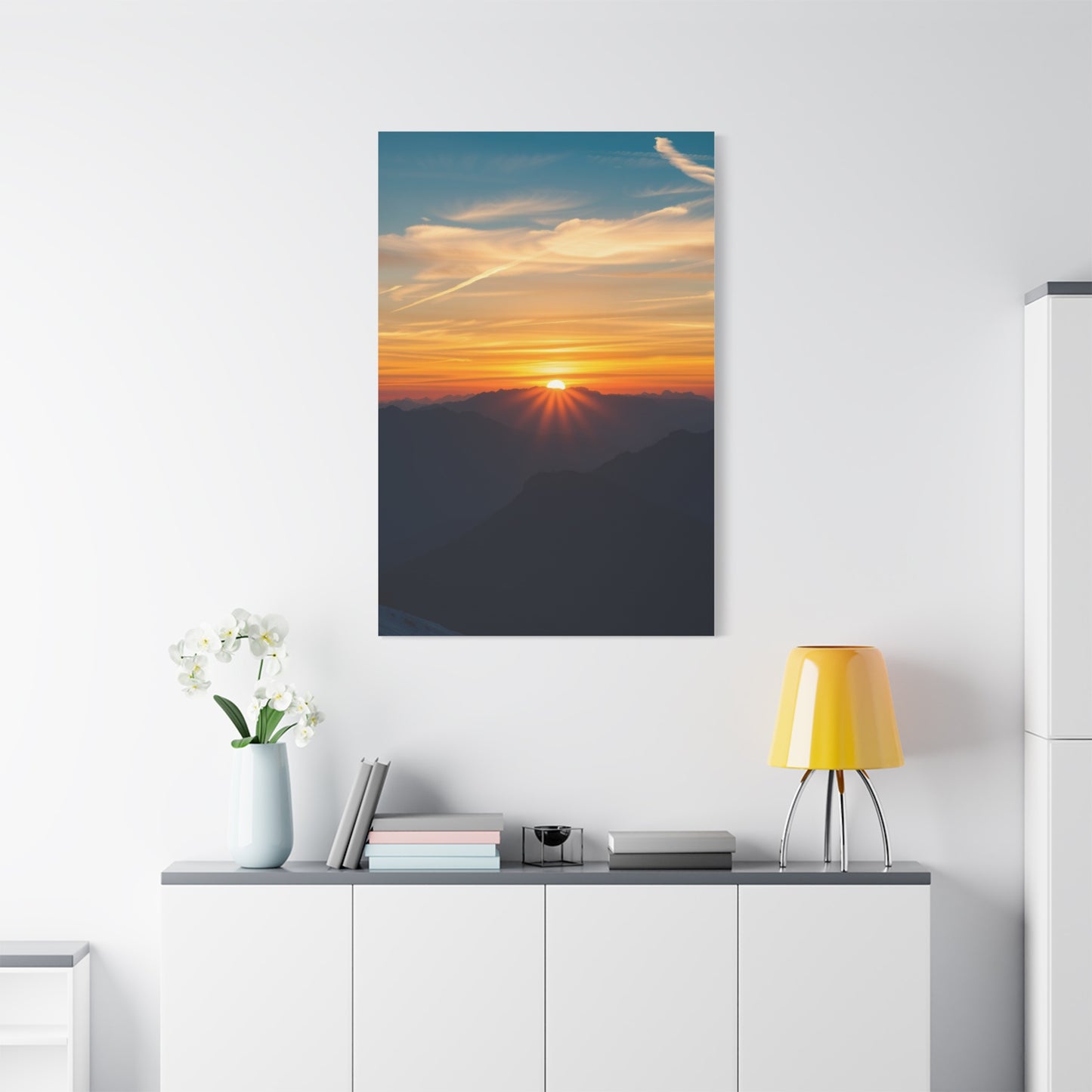
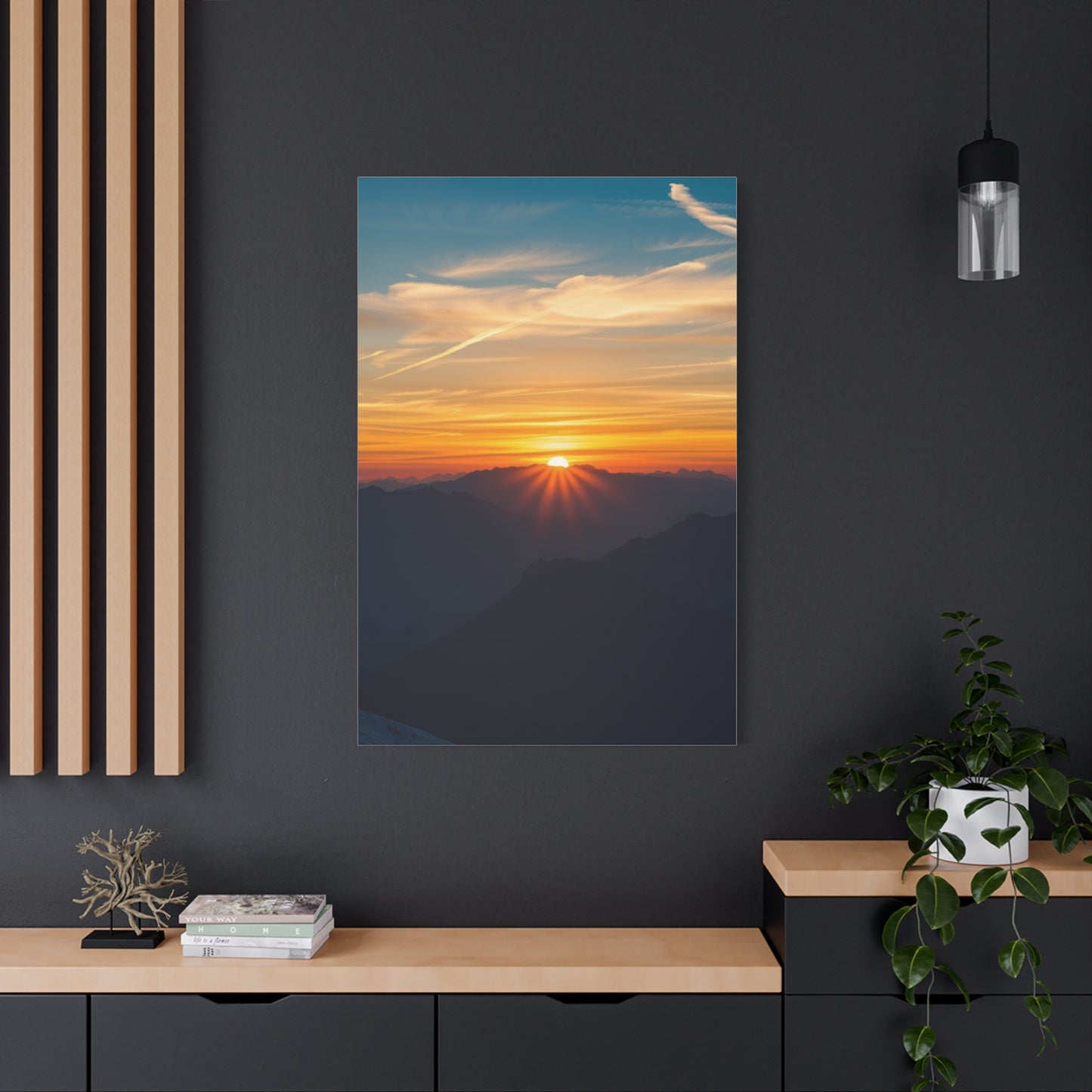
Alpine Dawn Dusk Masterpiece Wall Art: A Complete Guide to Mountain-Inspired Interior Design
The breathtaking beauty of alpine landscapes during the golden hours of dawn and dusk has captivated artists, photographers, and nature enthusiasts for centuries. When these magnificent moments are captured and transformed into wall art, they bring an unparalleled sense of serenity, grandeur, and natural wonder into interior spaces. Alpine dawn dusk masterpiece wall art represents more than mere decoration; it embodies the sublime intersection of nature's raw power and delicate beauty, frozen in time for endless contemplation and enjoyment.
Mountain scenery during these transitional hours presents a visual symphony of colors, textures, and atmospheric effects that few other natural phenomena can match. The soft, warm light of dawn gradually illuminating snow-capped peaks, or the fiery hues of sunset painting rugged ridgelines in shades of amber and rose, creates imagery that resonates deeply with our innate connection to the natural world. These artistic representations serve as windows to wilderness, offering daily reminders of the majestic landscapes that exist beyond our urban environments.
For homeowners, interior designers, and art collectors seeking to elevate their living or working spaces, alpine dawn dusk masterpiece wall art provides an elegant solution that combines aesthetic appeal with psychological benefits. Studies have consistently shown that exposure to nature imagery, particularly mountain landscapes, can reduce stress levels, improve mood, and enhance overall well-being. The calming influence of these artistic pieces makes them ideal for various settings, from residential living rooms and bedrooms to corporate offices and hospitality venues.
The growing popularity of mountain-themed interior design reflects a broader cultural movement toward biophilic design principles, which emphasize the human need to connect with nature even within built environments. Alpine dawn dusk masterpiece wall art fulfills this need by bringing the essence of pristine wilderness indoors, creating focal points that inspire contemplation, conversation, and a sense of peaceful refuge from the demands of modern life.
Understanding the Artistic Appeal of Alpine Landscapes
Alpine landscapes possess a timeless quality that transcends cultural boundaries and artistic movements. The dramatic topography of mountain regions, characterized by towering peaks, deep valleys, glacial formations, and alpine meadows, provides artists with an inexhaustible source of inspiration. When captured during the magical hours of dawn and dusk, these landscapes undergo a transformation that elevates them from impressive to truly extraordinary.
The appeal of alpine scenery in art stems from several interconnected factors. First, mountains represent permanence and stability in a constantly changing world. Their ancient geological presence speaks to something fundamental in the human psyche, offering a sense of grounding and perspective. Second, the vertical dimension of mountain landscapes creates natural compositional drama, with strong lines and shapes that guide the viewer's eye through the image. Third, the interplay of light and shadow on complex mountainous terrain during golden hour produces an almost infinite variety of visual effects, ensuring that no two alpine dawn or dusk scenes are ever identical.
Artists working with alpine subjects must possess both technical skill and deep appreciation for their subject matter. Capturing the essence of a mountain dawn requires understanding how light behaves at high altitudes, how atmospheric conditions affect color perception, and how to convey the immense scale of these landscapes while maintaining compositional balance. Similarly, depicting alpine dusk demands sensitivity to the rapid changes in light quality and color temperature that occur as the sun descends below the horizon.
Photography has revolutionized the way we capture and appreciate alpine beauty. Modern camera equipment allows artists to record the subtle gradations of color and light that occur during dawn and dusk with unprecedented accuracy. Long exposure techniques can transform moving clouds into ethereal streaks across mountain skies, while high dynamic range processing enables the capture of detail in both bright highlights and deep shadows. These technological advances have expanded the possibilities for creating alpine masterpieces that faithfully represent the grandeur of their subjects.
Painting remains a vital medium for alpine art, offering interpretive freedom that photography cannot match. Artists working in oils, acrylics, or watercolors can emphasize certain elements, simplify complex scenes, or introduce expressive color choices that convey emotional responses to the landscape rather than literal representation. The hand of the artist adds a human dimension to alpine dawn dusk masterpiece wall art, creating unique works that reflect individual vision and artistic sensibility.
The Science Behind Dawn and Dusk Light in Mountain Environments
Understanding why alpine landscapes appear so spectacular during dawn and dusk requires examining the atmospheric and optical phenomena that create these visual effects. The quality of light during these times differs fundamentally from midday illumination, producing the warm, saturated colors and soft contrasts that make dawn and dusk imagery so compelling.
During golden hour, the sun's position near the horizon means that sunlight must travel through significantly more atmosphere before reaching the earth's surface. This extended path causes shorter wavelength light, such as blues and violets, to scatter away from the direct beam, while longer wavelengths, particularly reds and oranges, continue through to illuminate the landscape. The result is the characteristic warm glow that bathes alpine scenes during these hours.
At high altitudes, this effect becomes even more pronounced. Mountain peaks often rise above much of the lower atmosphere, reducing atmospheric scattering and allowing for more intense, saturated colors. Additionally, the thinner air at elevation means less moisture and particulate matter to diffuse the light, creating sharper contrasts and more defined shadows. These factors combine to produce the crystalline clarity and vivid coloration that distinguish alpine dawn and dusk from similar conditions at lower elevations.
The phenomenon known as alpenglow adds another layer of visual drama to mountain sunrises and sunsets. This indirect illumination occurs when sunlight reflects off the atmosphere and back onto mountain faces, creating a rosy or golden glow that appears before sunrise or persists after sunset. Alpenglow can transform white snow into shades of pink, orange, or even purple, creating surreal and unforgettable scenes that photographers and artists eagerly seek to capture.
Cloud formations play a crucial role in the visual spectacle of alpine dawn and dusk. Clouds act as screens onto which the colored light of these hours is projected, creating ever-changing displays that can range from subtle pastel washes to dramatic explosions of color. In mountainous regions, orographic clouds, formed by air being forced upward by the terrain, add dynamic compositional elements that enhance the overall impact of dawn and dusk imagery.
Temperature inversions, common in alpine regions during early morning hours, create layers of mist and fog in valleys while leaving peaks clear and illuminated. This creates a dramatic visual effect where mountains appear to float above a sea of clouds, with the warm light of dawn creating a strong contrast between the golden peaks and the cool, blue-toned mist below. These conditions produce some of the most sought-after alpine dawn images, combining multiple landscape elements into a single, powerful composition.
Choosing the Perfect Alpine Dawn Dusk Wall Art for Your Space
Selecting the ideal alpine dawn dusk masterpiece wall art for a particular space involves considering multiple factors beyond simple aesthetic preference. The relationship between artwork, room characteristics, and intended atmosphere requires thoughtful evaluation to ensure that the final selection enhances rather than overwhelms the space.
Scale represents one of the most critical considerations when choosing wall art. Large-scale alpine panoramas work exceptionally well in spacious rooms with high ceilings, where they can command attention without overwhelming the space. These expansive pieces create dramatic focal points that can anchor entire room designs. Conversely, smaller spaces benefit from more moderately sized works that provide visual interest without dominating limited wall space. Consider the viewing distance as well; artwork that will be viewed primarily from across a room can feature broader compositions and larger elements, while pieces intended for closer viewing might emphasize intricate details and subtle tonal variations.
Color palette coordination ensures that alpine wall art integrates harmoniously with existing decor. Dawn scenes typically feature cooler tones with subtle warm highlights, making them compatible with contemporary color schemes that emphasize grays, whites, and cool blues. Dusk imagery, with its warmer orange and pink hues, complements spaces decorated in earth tones, warm neutrals, or traditional color palettes. However, strategic use of contrasting colors can create dynamic visual tension; a warm alpine sunset piece can provide a striking counterpoint to a predominantly cool-toned room, adding energy and warmth.
The subject matter within alpine imagery varies considerably, offering options to match different aesthetic preferences and room functions. Compositions featuring prominent peaks with dramatic sky elements work well in spaces where bold statements are desired, such as living rooms or office reception areas. More serene scenes emphasizing atmospheric effects and subtle color gradations suit spaces intended for relaxation, including bedrooms, meditation rooms, or spa environments. Images that balance multiple elements, foreground meadows or lakes with distant mountains, provide versatility that works across various settings.
Framing choices significantly impact how alpine dawn dusk wall art integrates with interior design. Traditional frames with substantial profiles suit classic or formal interiors, adding gravitas to the artwork while clearly delineating it from the surrounding wall. Modern frameless mounting techniques, such as float mounting or gallery wraps, create contemporary presentations that allow the image itself to dominate without visual interruption. Metal frames complement industrial or modern aesthetics, while wooden frames in natural finishes enhance rustic or organic design schemes. The frame color should either complement the dominant hues in the artwork or provide neutral support that doesn't compete with the image.
Lighting design plays a crucial role in displaying alpine wall art effectively. Natural light can enhance the viewing experience but requires careful consideration of sun exposure, which can cause fading over time. Positioning artwork away from direct sunlight preserves its longevity while allowing ambient natural light to illuminate it. Artificial lighting offers more control, with options including dedicated picture lights, track lighting, or integrated wall washing systems. The color temperature of artificial light sources affects how artwork appears; warm white bulbs enhance the golden tones of dusk imagery, while neutral or cool white illumination better represents the subtle hues of dawn scenes.
Popular Styles and Approaches in Alpine Mountain Art
The artistic representation of alpine landscapes during dawn and dusk encompasses diverse styles and techniques, each offering distinct visual characteristics and emotional resonances. Understanding these various approaches helps art enthusiasts identify works that align with their personal tastes and interior design objectives.
Photorealistic representations strive to capture alpine scenes with maximum fidelity to visual reality. These works, whether produced through photography or meticulous painting techniques, emphasize accurate color rendition, precise detail, and faithful representation of atmospheric conditions. Photorealistic alpine art appeals to viewers who appreciate technical excellence and desire imagery that serves as a convincing window to actual mountain landscapes. These pieces work particularly well in contemporary and modern interiors where clean lines and realistic imagery complement minimalist design philosophies.
Impressionistic interpretations of alpine dawn and dusk prioritize the capture of atmospheric effects and emotional responses over precise detail. Artists working in this style use loose brushwork, simplified forms, and emphasis on light and color to convey the essence of a mountain scene rather than its exact appearance. The resulting works possess a dreamlike quality that invites contemplation and emotional engagement. Impressionistic alpine art suits spaces where softer, more romantic aesthetics are desired, including bedrooms, reading nooks, or intimate dining areas.
Abstract expressions derived from alpine landscapes deconstruct mountain forms and dawn/dusk color palettes into non-representational compositions. These works may retain suggestions of peaks, horizons, or atmospheric effects while emphasizing color relationships, gestural marks, or geometric structures. Abstract alpine art offers maximum flexibility in interior design applications, as the reduced representational content allows the work to complement diverse decor styles while still conveying the essential character of mountain landscapes.
Minimalist approaches strip alpine scenes to their most essential elements, often employing limited color palettes and simplified forms. A minimalist dawn scene might reduce a complex mountain vista to a few horizontal bands representing sky, peaks, and foreground, using subtle color variations to suggest the quality of early morning light. This style appeals to contemporary sensibilities and works exceptionally well in spaces where understated elegance and visual restraint are valued.
Dramatic or romantic interpretations emphasize the sublime and awe-inspiring aspects of alpine landscapes. These works often feature heightened contrast, intensified colors, and compositional choices that emphasize the grand scale and power of mountain environments. Romantic alpine art connects with historical traditions in landscape painting while offering contemporary viewers imagery that speaks to our enduring fascination with wild, untamed nature. These pieces make strong statements in formal living spaces, libraries, or anywhere a sense of drama and gravitas is desired.
Vintage and nostalgic styles reference earlier periods of alpine art, from Victorian-era romantic landscapes to mid-century travel poster aesthetics. These interpretations often employ period-appropriate color palettes, compositional conventions, and techniques, creating works that evoke specific eras while depicting timeless mountain beauty. Vintage-style alpine art works beautifully in traditionally decorated spaces, mountain lodges, or interiors that deliberately blend historical and contemporary elements.
Benefits of Mountain Landscape Art
The presence of alpine dawn dusk masterpiece wall art in living and working spaces offers measurable psychological and emotional benefits that extend far beyond aesthetic enjoyment. Research in environmental psychology and biophilic design has documented the positive effects of nature imagery on human wellbeing, with mountain landscapes proving particularly effective.
Stress reduction represents one of the most significant benefits associated with viewing alpine landscape art. Studies using physiological measures such as heart rate variability, cortisol levels, and blood pressure have demonstrated that exposure to nature imagery, particularly expansive landscapes featuring mountains, produces measurable relaxation responses. The combination of natural elements, harmonious color palettes, and the inherent serenity of dawn and dusk scenes creates a visual experience that activates the parasympathetic nervous system, promoting calm and reducing anxiety.
Attention restoration theory explains how alpine landscape art helps combat mental fatigue and improves cognitive function. Modern life bombards us with stimuli that require directed attention, leading to mental exhaustion. Nature imagery provides a form of soft fascination that engages attention effortlessly, allowing directed attention mechanisms to rest and recover. The complex yet harmonious compositions found in alpine dawn and dusk art offer sufficient visual interest to engage the mind while remaining restful and non-demanding, making them ideal for spaces where mental clarity and focus are important.
The sense of awe inspired by mountain landscapes triggers specific psychological responses that enhance overall wellbeing. Awe experiences, characterized by the perception of vastness and the need to mentally accommodate something beyond ordinary experience, have been linked to increased life satisfaction, reduced materialism, and enhanced prosocial behavior. Alpine dawn dusk art, particularly large-scale works that emphasize the grandeur of mountain landscapes, can evoke this sense of awe even when viewed indoors, providing regular doses of this beneficial emotional state.
Connection to nature, even through visual representation, fulfills a fundamental human need that urban and indoor environments often neglect. The biophilia hypothesis suggests that humans possess an innate tendency to seek connections with nature and other forms of life. Alpine wall art helps satisfy this need, particularly for individuals whose daily lives offer limited exposure to natural environments. This connection can improve mood, enhance creativity, and contribute to a greater sense of life satisfaction and wellbeing.
The presence of mountain landscape art can also facilitate mindfulness and meditation practices. The timeless quality of alpine scenes, particularly those capturing the transitional moments of dawn and dusk, provides anchors for contemplative attention. Viewers can use these images as focal points for mindfulness exercises, allowing the peaceful qualities of the artwork to support practices of present-moment awareness and emotional regulation.
Integrating Alpine Art into Various Interior Design Styles
Alpine dawn dusk masterpiece wall art demonstrates remarkable versatility, complementing a wide range of interior design styles when selected and displayed thoughtfully. Understanding how to integrate mountain landscape art into different aesthetic frameworks ensures cohesive, harmonious spaces that leverage the art's full potential.
In contemporary interiors characterized by clean lines, neutral color palettes, and minimalist sensibilities, alpine wall art provides essential warmth and visual interest without compromising the style's fundamental principles. Large-scale photographic prints with simple framing or frameless mounting techniques work particularly well, creating focal points that add depth and character while maintaining the uncluttered aesthetic. Dawn scenes featuring subtle color transitions and simplified compositions align especially well with contemporary design values, offering sophistication and restraint.
Traditional and classic interiors benefit from alpine art that references historical landscape painting traditions. Works featuring romantic interpretations of mountain scenery, presented in substantial wooden or gilt frames, harmonize with traditional furnishings, rich fabrics, and formal arrangements. Dusk scenes with warm, golden light complement the deeper colors and ornate details typical of traditional design, while the timeless subject matter bridges historical and contemporary sensibilities.
Rustic and mountain lodge styles find their most natural partnership with alpine dawn dusk art. In these settings, mountain landscape imagery reinforces the connection to surrounding natural environments while celebrating the aesthetic traditions of mountain regions. Works featuring local peaks or recognizable alpine terrain create particularly strong connections, transforming wall art into visual anchors that tie interior spaces to their geographic context. Natural wood framing, often in rough-hewn or log-cabin styles, enhances the cohesive mountain aesthetic.
Scandinavian and Nordic design styles, with their emphasis on light, natural materials, and connection to nature, provide ideal settings for alpine art. The muted color palettes and emphasis on atmospheric effects in many dawn scenes align perfectly with Scandinavian design principles. Frameless mounting or simple, light-colored wooden frames maintain the clean, uncluttered aesthetic while allowing the artwork to provide necessary visual warmth and natural connection.
Industrial interiors, characterized by exposed structural elements, raw materials, and urban influences, can benefit from the softening presence of alpine landscape art. The organic forms and natural color palettes of mountain scenes provide essential contrast to hard surfaces and angular architecture, creating balance and preventing spaces from feeling cold or harsh. Metal framing or direct mounting to concrete or brick walls can emphasize the juxtaposition between natural and industrial elements while maintaining stylistic coherence.
Eclectic and bohemian spaces, which celebrate personal expression and diverse influences, offer opportunities for creative approaches to displaying alpine art. Mixing different sizes, framing styles, or even combining photographic and painted representations of alpine dawn and dusk can create dynamic gallery walls that reflect individual personality. The natural subject matter provides a unifying thread that prevents eclecticism from descending into chaos, while the variety of approaches maintains the style's characteristic energy and individuality.
Regional Variations in Alpine Landscape Character
Alpine regions around the world offer distinct landscape characteristics that influence the appearance and mood of dawn and dusk imagery. Understanding these regional differences helps art collectors and interior designers select works that resonate with personal connections, travel memories, or specific aesthetic preferences.
The European Alps, stretching across eight countries, present perhaps the most iconic alpine imagery. These mountains feature distinctive sharp peaks, extensive glacier systems, and high-altitude meadows that create layered compositions during golden hour. Dawn in the Swiss Alps, for instance, might capture the Matterhorn's distinctive pyramid shape emerging from morning mist, while dusk over the French Alps could showcase the warm light on Mont Blanc's massive bulk. The presence of traditional alpine architecture, including chalets and church spires in valley villages, adds human elements that can enhance compositions and create connections between natural and cultural landscapes.
The Rocky Mountains of North America extend from northern Canada through the western United States, offering diverse alpine environments. The Canadian Rockies feature dramatic sedimentary peaks with distinctive layered geology, creating strong horizontal lines that enhance compositions. Dawn over these mountains often reveals turquoise glacial lakes reflecting pink-tinted peaks, creating color combinations found nowhere else. The Colorado Rockies present different characteristics, with rounded granite peaks and high alpine tundra providing softer, more organic forms. Sunset images from these regions often feature dramatic weather systems moving across the continental divide, adding dynamic cloud elements to mountain silhouettes.
The Himalayas represent the ultimate expression of alpine grandeur, with the world's highest peaks creating landscapes of almost incomprehensible scale. Dawn imagery from the Himalayan region often captures the phenomenon of morning light reaching summits that tower above cloud layers, creating ethereal scenes where peaks appear suspended in space. The unique atmospheric conditions at these extreme elevations produce intense color saturation and crystalline clarity. The cultural landscape of the Himalayas, including Buddhist monasteries and prayer flags, adds spiritual dimensions to alpine imagery from this region.
The Southern Alps of New Zealand provide distinctive alpine landscapes characterized by steep terrain, extensive glacier systems, and proximity to coastal environments. The meeting of alpine and maritime climates creates dynamic weather patterns that produce dramatic dawn and dusk conditions. Images from this region often feature peaks like Aoraki Mount Cook rising directly from low-elevation valleys, emphasizing the extreme vertical relief. The presence of distinctive flora, including alpine beech forests and native tussock grasslands, gives New Zealand alpine imagery unique foreground elements.
Scandinavian mountain ranges, including the Scandinavian Mountains stretching through Norway and Sweden, offer more subtle alpine character with rounded peaks shaped by extensive glaciation. Dawn and dusk imagery from these regions often emphasizes atmospheric effects and vast skies rather than dramatic peaks. The presence of Arctic and sub-Arctic environments creates unique light qualities, including extended golden hours during summer months and possibilities for aurora borealis to accompany alpine scenes during darker seasons.
Creating Gallery Walls with Alpine Art Collections
A well-designed gallery wall featuring multiple alpine dawn dusk masterpiece wall art pieces can create more powerful visual impact than any single work alone. The careful arrangement of related images tells a more complete story of mountain beauty while offering flexibility in scale and composition that single large pieces cannot match.
Thematic coherence provides the foundation for successful alpine gallery walls. Collections might focus on a single mountain range across different seasons or times of day, creating visual narratives that explore variations in light, weather, and atmospheric conditions. Alternatively, a global approach might feature dawn and dusk scenes from alpine regions around the world, creating a celebration of mountain beauty that transcends geographic boundaries. The common thread of golden hour lighting unifies diverse locations while the variations in peak forms, vegetation, and atmospheric character provide visual interest and complexity.
Compositional approaches to arranging alpine gallery walls require attention to visual balance, flow, and rhythm. Symmetrical arrangements, with identical or similar-sized frames arranged in grid patterns, create formal, orderly presentations that work well in traditional or contemporary settings. Asymmetrical compositions offer more dynamic energy, with varied frame sizes and arrangements that guide the eye through the collection. The largest or most visually compelling piece typically serves as an anchor, with smaller works arranged in relationship to this central element.
Color coordination across multiple alpine images ensures cohesive presentations rather than chaotic assemblages. Collections emphasizing warm dusk tones create harmony through their shared palette, even when depicting different locations or compositions. Mixing dawn and dusk images requires more careful consideration; alternating cool and warm tones can create pleasing rhythms, while grouping similar temperatures prevents jarring transitions. Considering the colors in surrounding furnishings and decor helps ensure the gallery wall integrates smoothly with the broader interior design.
Frame selection for alpine gallery walls demands consistency in style while allowing for variation in size. Matching frames in identical or complementary finishes create unified presentations that emphasize the artwork itself. Mat boards add another layer of design consideration; white or neutral mats work universally, while colored mats can either complement dominant tones in the images or provide contrasting elements that increase visual interest. The width of mats and frames should remain consistent across the collection to maintain visual coherence.
Spacing and arrangement guidelines help achieve professional-looking results. Maintaining consistent spacing between frames, typically two to three inches, creates visual connections that unify the collection. The gallery wall should relate to surrounding architectural elements; centering the arrangement on a wall, aligning edges with furniture pieces, or relating to doorways and windows helps integrate the collection into the room's overall composition.
The Role of Foreground Elements in Alpine Compositions
The relationship between distant peaks and foreground elements often determines whether alpine dawn dusk imagery succeeds as compelling art or remains merely documentary. Thoughtful integration of foreground interest creates depth, guides viewer attention, and provides context that enhances the overall composition.
Wildflower meadows offer classic foreground elements for alpine summer imagery. The explosion of color from alpine flowers creates visual anchors in the lower portion of compositions while providing scale references that emphasize the height and distance of background peaks. Dawn light filtering through backlit wildflowers adds luminous quality and creates bokeh effects that soften foreground details without sacrificing interest. The organic, flowing forms of meadow vegetation contrast beautifully with the angular, solid geometry of mountain peaks, creating dynamic visual tension.
Water features including alpine lakes, streams, and cascades provide powerful foreground elements through their reflective properties and visual movement. Mirror-like alpine lakes double the impact of dawn or dusk color in the sky by reflecting it in the foreground, creating compositions dominated by harmonious hues. Moving water adds life and energy to otherwise static mountain scenes, while leading lines created by streams or shorelines guide viewer attention from foreground to background. The smooth textures of calm water contrast with the rough texture of rock and vegetation, adding tactile variety to the image.
Rocky foregrounds emphasizing the geological character of alpine environments create compositions with strong graphic impact. Large boulders or rocky outcrops in the foreground establish immediate interest while their weathered textures and forms echo the character of distant peaks. Side lighting during golden hour emphasizes texture and three-dimensionality in rocky foregrounds, creating strong visual anchors. The mineral colors of rock, from warm granites to cool slates, can either complement or provide interesting contrast with the colors present in dawn or dusk skies.
Trees and forest elements transition between lowland environments and high alpine zones, providing foreground interest that adds vertical elements and frames distant views. Individual trees shaped by harsh alpine conditions, such as wind-sculpted conifers or gnarled bristlecone pines, carry character and visual interest sufficient to share compositional importance with background peaks. Forest edges and treelines create natural horizontal divisions that organize compositions while the vertical lines of tree trunks add structure and rhythm.
Snow formations in foregrounds add graphic interest and emphasize the alpine character of landscapes. Wind-sculpted snow, sastrugi patterns, or the texture of consolidated spring snow provide detailed foreground interest while maintaining the white-on-white palette that defines winter alpine imagery. Subtle color shifts in snow, from blue shadows to pink highlights during golden hour, prevent monotony while maintaining color harmony. Snow foregrounds work particularly well in minimalist compositions where simplified forms and limited color palettes create meditative, restful imagery.
Conservation and Care of Alpine Wall Art
Proper care and conservation of alpine dawn dusk masterpiece wall art ensures that these investments maintain their visual impact and monetary value over time. Understanding the factors that can degrade artwork and implementing appropriate protective measures extends the life of these pieces indefinitely.
Light exposure represents the primary threat to most forms of wall art. Ultraviolet radiation causes fading and color shifts in both photographic prints and painted works, while excessive visible light accelerates deterioration. Positioning artwork away from direct sunlight provides essential protection; even brief daily exposure can cause cumulative damage over years. When natural light is unavoidable, UV-filtering glazing materials or window treatments that block ultraviolet radiation while allowing visible light to pass offer protection without eliminating natural illumination entirely.
Artificial lighting, while more controllable than natural light, still poses risks when excessive. LED lighting produces minimal heat and ultraviolet radiation compared to incandescent or halogen sources, making it the preferred choice for illuminating artwork. Limiting the duration of artificial lighting through timers or manual switching reduces total exposure. Using dimmed lighting when intense illumination is unnecessary further protects artwork while providing sufficient light for viewing.
Insurance and documentation protect the financial investment represented by quality alpine wall art. Photographing artwork and maintaining records of purchase price, artist information, and framing details facilitates insurance claims if damage or loss occurs. Appraisals for valuable pieces establish current market value for insurance purposes and should be updated periodically as the art market changes. Specific fine art insurance policies offer more comprehensive coverage than standard homeowner's policies, particularly for high-value collections.
Storage of alpine artwork not currently displayed requires careful attention to environmental conditions and physical protection. Pieces should be stored in climate-controlled spaces with stable temperature and humidity. Vertical storage, when possible, prevents pressure damage that can occur when pieces are stacked horizontally. Protective wrapping using acid-free materials protects surfaces while allowing air circulation. Storing framed works with protective corners prevents frame damage, and maintaining small gaps between stored pieces prevents pressure points that could damage frames or artwork.
Alpine Wall Art in Commercial and Hospitality Spaces
The application of alpine dawn dusk masterpiece wall art extends beyond residential settings into commercial and hospitality environments, where carefully selected mountain imagery serves multiple functions from branding to guest experience enhancement. Understanding the specific requirements and opportunities in these contexts informs selection and installation decisions.
Hotel and resort environments, particularly those located in or near mountain regions, benefit immensely from alpine wall art that reinforces location and creates memorable guest experiences. Large-scale installations in lobbies and public spaces make immediate impressions, setting expectations and establishing aesthetic themes that carry through the property. Guest rooms featuring alpine dawn or dusk imagery provide calming, attractive focal points while connecting indoor spaces with surrounding mountain landscapes. The psychological benefits of nature imagery, including stress reduction and enhanced wellbeing, directly contribute to guest satisfaction and likelihood of return visits.
Corporate offices increasingly recognize the value of incorporating nature imagery into workplace environments. Alpine wall art in reception areas, conference rooms, and common spaces creates sophisticated, professional atmospheres while providing the wellbeing benefits associated with biophilic design. Studies have documented increased employee satisfaction, reduced stress, and improved productivity in workplaces that incorporate natural elements, including landscape imagery. The timeless, non-controversial nature of mountain landscapes makes them appropriate for diverse corporate cultures and international business contexts.
Medical and healthcare facilities have documented the therapeutic benefits of nature imagery in patient spaces. Alpine dawn dusk art in waiting areas, patient rooms, and treatment spaces contributes to reduced anxiety and improved patient outcomes. The calming color palettes and peaceful compositions typical of golden hour mountain photography align perfectly with healthcare environment requirements. Some facilities have implemented evidence-based design programs specifically incorporating nature imagery, with alpine landscapes proving particularly effective due to their combination of visual interest and psychological calm.
Restaurant and hospitality venues use alpine wall art to establish ambiance and reinforce culinary concepts. Mountain-themed restaurants featuring cuisine from alpine regions find natural synergy with appropriate landscape imagery. Even establishments without specific mountain connections can benefit from the sophisticated, upscale associations that quality alpine art conveys. The warm tones of dusk imagery complement the intimate lighting typical of fine dining environments, while cooler dawn scenes work well in breakfast venues or cafes emphasizing fresh, morning concepts.
Retail environments, particularly those selling outdoor recreation equipment, travel services, or lifestyle products, use alpine imagery to inspire customers and reinforce brand values. Large photographic installations create aspirational environments that connect products with the adventures and experiences they enable. The emotional resonance of spectacular mountain landscapes at their most beautiful moments creates positive associations that influence purchasing decisions and brand loyalty.
Wellness and fitness facilities find alpine wall art particularly appropriate given the connections between mountain environments, outdoor recreation, and healthy lifestyles. Yoga studios, meditation spaces, and fitness centers use calming alpine imagery to enhance the experience of physical and mental practices. The sense of spaciousness and fresh air evoked by mountain landscapes creates psychological environments conducive to exercise and wellness activities even in enclosed spaces.
Creating Personal Connections Through Alpine Art
The most meaningful alpine dawn dusk masterpiece wall art often represents more than aesthetic appreciation; these pieces carry personal significance through connections to experiences, memories, and aspirations. Understanding how to identify and incorporate artwork with personal resonance transforms wall art from decoration into meaningful elements of home environments.
Travel memories provide powerful connections to alpine imagery. A photograph capturing dawn light on peaks climbed during a memorable trip, or sunset over a valley where significant life events occurred, transforms wall art into a tangible link to those experiences. Each viewing reactivates memories and emotions associated with the original experience, making the artwork a constant reminder of meaningful moments. When selecting alpine art based on personal travel, finding works that capture not just the location but the specific conditions or perspective experienced enhances the personal connection.
Aspirational imagery representing mountains not yet visited or experiences still anticipated can be equally powerful. A spectacular image of Himalayan peaks might represent mountaineering ambitions, while sunrise over the Alps could symbolize planned retirement travel. These pieces function as visual reminders of goals and dreams, maintaining motivation and keeping aspirations present in daily consciousness. The inspirational quality of alpine dawn and dusk imagery naturally supports this aspirational function, presenting mountains at their most compelling and beautiful.
Family and heritage connections to mountain regions create deep resonances with alpine art. Displaying imagery from ancestral homelands maintains connections across generations and geography, particularly meaningful for families separated from mountain regions by immigration or relocation. Images featuring peaks visible from childhood homes or landscapes similar to those where formative experiences occurred help maintain cultural and personal identity. These pieces can become focal points for family storytelling, helping younger generations understand their heritage and connections to specific places.
Commissioning custom alpine artwork based on personal photographs or specific locations creates entirely unique pieces impossible to find through commercial sources. Professional photographers and artists can work from personal images to create larger-scale, gallery-quality pieces that capture individually significant moments or locations. This approach combines the technical excellence of professional art-making with the personal significance of individually meaningful subjects, resulting in artwork that holds both aesthetic and emotional value.
The Environmental Ethics of Alpine Photography and Art
The impact of photography on sensitive alpine environments represents a growing concern as popular locations experience increasing visitation driven partly by social media and art featuring these places. Photographers working in alpine environments carry responsibility to minimize their impact through practices including staying on established trails, avoiding trampling sensitive vegetation, and respecting closures designed to protect fragile areas or wildlife. The principle of Leave No Trace applies equally to photographers as to other backcountry users, requiring careful attention to waste disposal, campsite selection, and general environmental impact.
Over-tourism driven by iconic alpine imagery has become problematic in some locations where the popularity of specific views or landmarks overwhelms local infrastructure and damages the very landscapes people come to experience. Photographers and artists face ethical questions about whether to share location information for spectacular but vulnerable sites. Some practitioners have begun withholding specific location details when publishing images from sensitive areas, balancing the desire to share their work with responsibility to protect fragile environments. This approach may frustrate viewers seeking to visit depicted locations but helps preserve these places for future generations.
Wildlife disturbance represents another concern in alpine photography. The desire to capture animals in spectacular mountain settings can lead to behaviors that stress wildlife, particularly during sensitive periods including mating seasons, rearing young, or winter when energy conservation is critical. Ethical alpine photography maintains respectful distances from wildlife, uses long telephoto lenses to avoid approaching too closely, and prioritizes animal welfare over obtaining images. Purchasing alpine art from photographers who demonstrate responsible wildlife practices supports ethical approaches to nature photography.
Climate change documentation through alpine imagery serves both artistic and scientific purposes. Photographs of glaciers, snowpack, and other climate-sensitive alpine features create visual records of environmental changes occurring over decades. Some alpine photographers deliberately return to historical photograph locations to document changes through comparison images. While sobering, these records raise awareness about climate impacts and can inspire action to address environmental challenges. Supporting artists engaged in this documentary work contributes to broader climate awareness.
The carbon footprint of creating and distributing alpine wall art deserves consideration. International travel to photograph distant mountain ranges, energy used in digital processing and printing, and transportation of finished works all contribute to greenhouse gas emissions. Some photographers and galleries have begun addressing these concerns through carbon offset programs, choosing local production facilities when possible, and using sustainable materials in framing and presentation. Consumers can support these efforts by seeking out artists and suppliers demonstrating environmental responsibility.
Sustainable materials in art production increasingly influence conscientious consumers' purchasing decisions. Recycled content papers, sustainably sourced wood frames, and non-toxic inks represent options for reducing the environmental impact of alpine wall art. While these materials may carry premium prices, they align with values of environmental stewardship appropriate to artwork celebrating natural landscapes. The irony of damaging environments to create art depicting them has led to increasing emphasis on sustainable practices throughout the art production chain.
Building an Alpine Art Collection Over Time
Establishing collection themes provides direction while allowing sufficient flexibility for diverse acquisitions. Themes might focus on specific mountain ranges, allowing deep engagement with particular landscapes through works showing different perspectives, seasons, and lighting conditions. Alternatively, global themes celebrating alpine beauty worldwide create opportunities for broad collecting while maintaining coherent focus on mountain landscapes. Dawn versus dusk specialization offers another approach, with collections emphasizing either morning or evening light to create unified color palettes and moods.
Starting with accessible pieces allows beginning collectors to develop confidence and refine preferences without major financial commitment. High-quality prints from emerging photographers or smaller works from established artists provide entry points into alpine art collecting. These initial acquisitions serve educational purposes, teaching collectors about their preferences regarding color palettes, compositional styles, and subject matter. As collections develop, these early pieces can be retained for their personal significance or transitioned out as tastes evolve and resources allow for more ambitious acquisitions.
Balancing investment pieces with decorative works creates collections serving multiple purposes. Investment-grade alpine art from recognized photographers or artists carries potential for appreciation beyond its decorative value, functioning as alternative assets within diversified portfolios. These pieces typically require larger initial investments but offer financial security beyond aesthetic enjoyment. Mixing investment pieces with more affordable decorative works allows collectors to fill spaces throughout their homes while allocating resources strategically toward pieces with long-term value potential.
Relationships with galleries, photographers, and artists enhance the collecting experience while providing access to information, opportunities, and sometimes preferential pricing. Regular gallery visitors often learn about new work before public announcements, enabling acquisition of limited edition pieces before they sell out. Direct relationships with artists provide insights into creative processes and intentions while sometimes allowing commission of custom works tailored to specific preferences. These relationships transform collecting from transactional purchasing into ongoing engagement with the artistic community.
Documentation and provenance tracking become increasingly important as collections grow and individual pieces gain value. Maintaining records of purchase dates, prices, edition numbers, and condition reports protects financial interests while providing information necessary for insurance, estate planning, or eventual sale. Certificates of authenticity, artist signatures, and gallery documentation should be carefully preserved, as these elements significantly affect artwork value and marketability.
Conclusion
Alpine dawn dusk masterpiece wall art represents far more than simple decoration for interior spaces. These powerful images capturing mountain landscapes during nature's most spectacular hours connect us with wilderness beauty, provide psychological benefits through their calming and inspiring qualities, and serve as lasting reminders of the natural world's magnificence. Whether displayed in homes, offices, or public spaces, carefully selected alpine imagery transforms environments while enriching the lives of those who experience them daily.
The enduring appeal of mountain landscapes, particularly when captured during the golden light of dawn and dusk, speaks to fundamental aspects of human nature. Our innate attraction to these scenes reflects evolutionary heritage, aesthetic sensibilities, and spiritual dimensions that transcend practical concerns. Mountains represent stability, challenge, and the sublime intersection of beauty and power. The transitional moments of dawn and dusk add temporal dimension, reminding us of nature's daily rhythms and the precious, fleeting quality of perfect light.
For those seeking to incorporate alpine dawn dusk masterpiece wall art into their lives, the journey involves both practical considerations and personal reflection. Understanding technical aspects of photography and printing, recognizing quality in composition and execution, and considering practical matters of sizing, framing, and placement all contribute to successful selections. Equally important are the emotional and psychological dimensions: identifying imagery that resonates personally, creating connections between art and life experiences, and recognizing how specific works affect mood and atmosphere in particular spaces.
The versatility of alpine art ensures appropriate options exist for virtually any interior design style, spatial requirement, or aesthetic preference. From contemporary minimalist interpretations to traditional romantic representations, from intimate small-scale works to monumental installations, the diversity within this artistic genre accommodates varied tastes while maintaining focus on the essential subject of mountain beauty during golden hour. This flexibility, combined with the timeless appeal of alpine landscapes, ensures that well-chosen pieces remain relevant and enjoyable across years and even decades.
As we navigate increasingly urbanized, technology-dominated lives, the role of alpine dawn dusk masterpiece wall art becomes ever more significant. These works provide windows to natural environments that many experience too rarely, offering daily reminders of the wilderness that exists beyond our constructed environments. The psychological and emotional benefits of this connection, documented through research in environmental psychology and biophilic design, validate what many instinctively understand: that surrounding ourselves with images of natural beauty enhances our wellbeing and quality of life.
The environmental and ethical dimensions of alpine art deserve thoughtful consideration as awareness grows regarding our impacts on the landscapes we celebrate. Supporting artists who work responsibly in sensitive alpine environments, choosing sustainable materials in framing and production, and recognizing the role of art in conservation efforts all contribute to ensuring that the mountain landscapes we admire remain protected for future generations. The relationship between appreciating alpine beauty and preserving it should be complementary, with art serving as inspiration for environmental stewardship rather than contributing to the degradation of fragile ecosystems.
Looking toward the future, technological advances will continue expanding possibilities for creating, producing, and displaying alpine art. Innovations in camera technology, printing capabilities, and presentation methods will offer new ways to experience mountain beauty in our interior spaces. However, the fundamental appeal of these landscapes, the emotional impact of golden hour light on alpine peaks, and the psychological benefits of connecting with nature through art will remain constant. These timeless qualities ensure that alpine dawn dusk masterpiece wall art will continue enriching human environments and experiences for generations to come.

